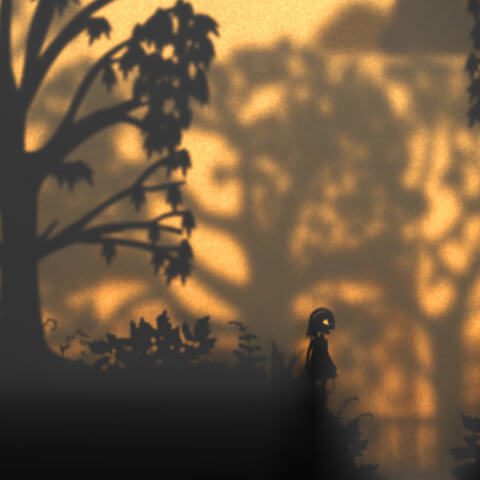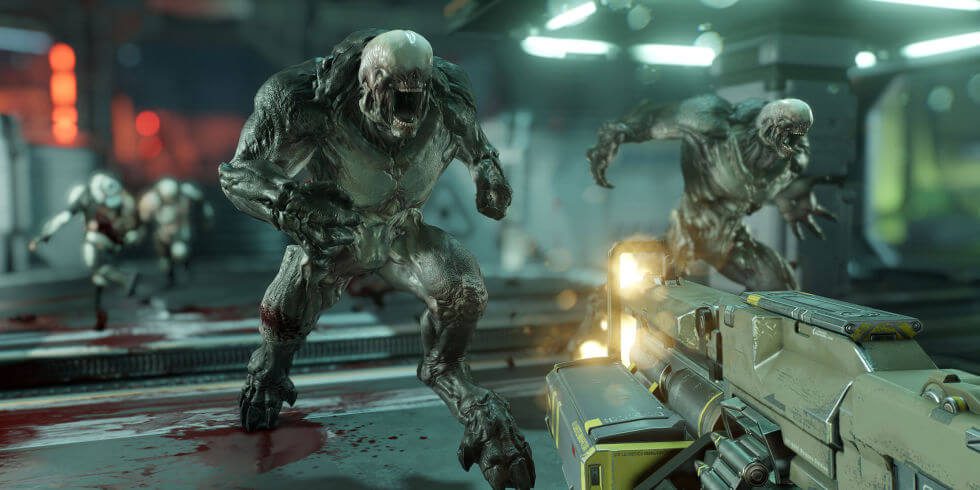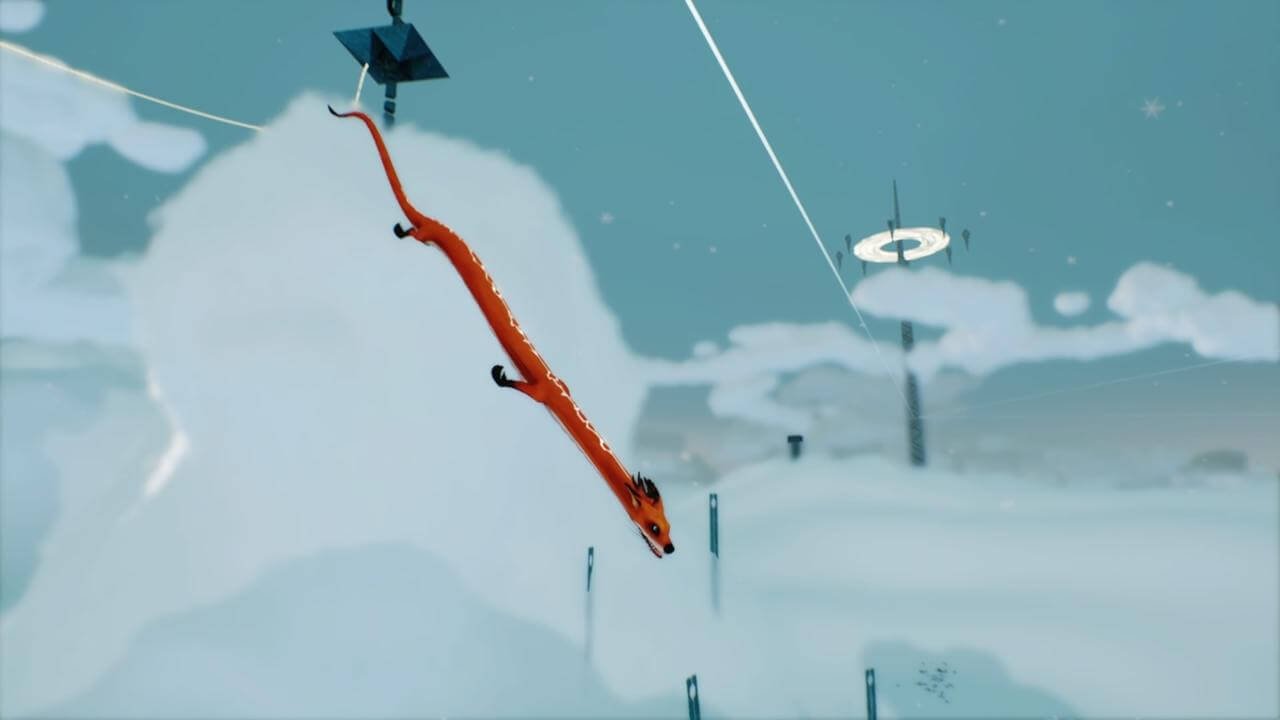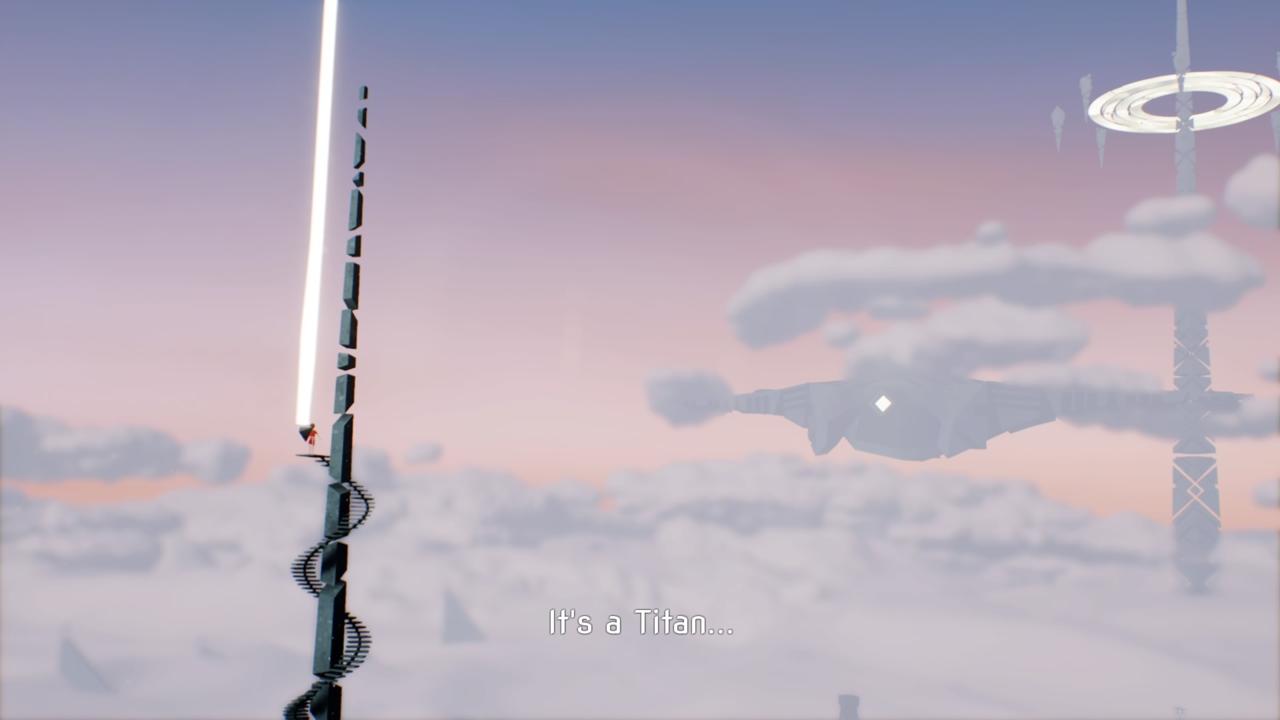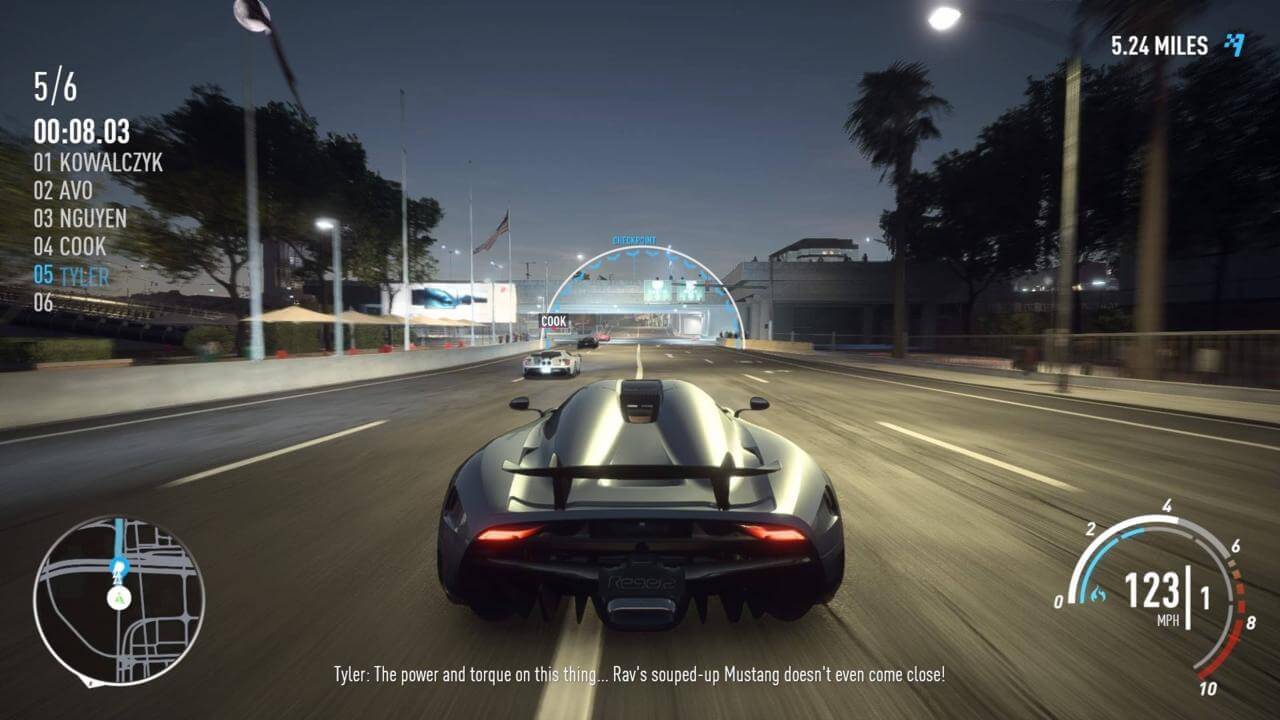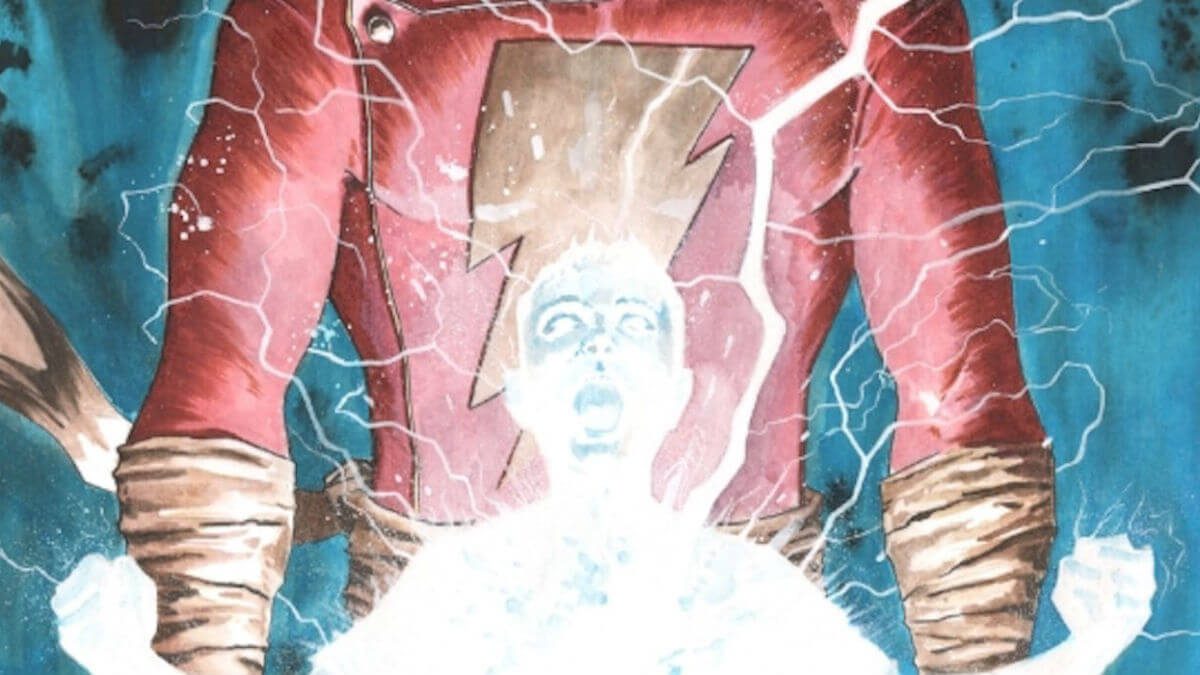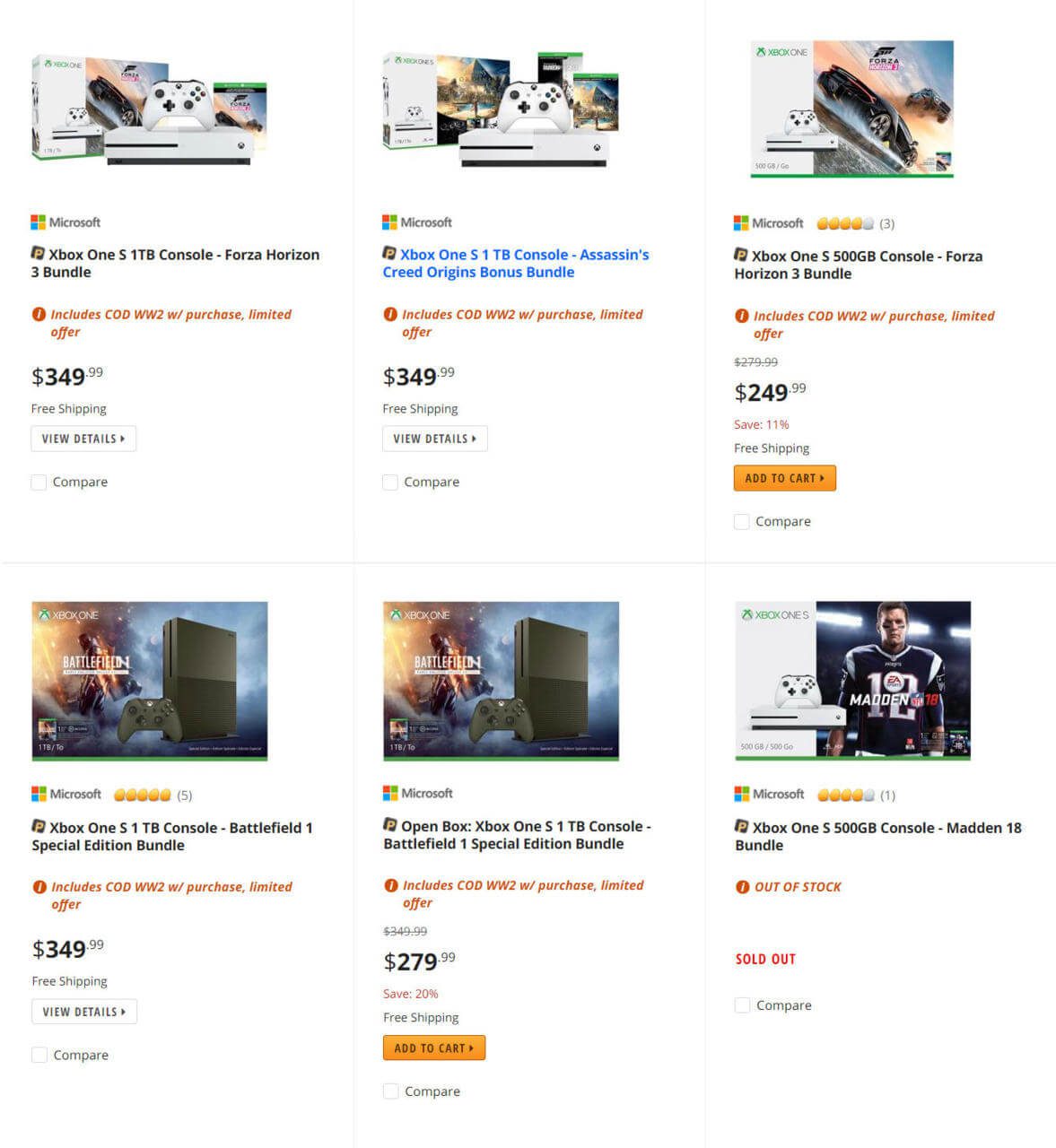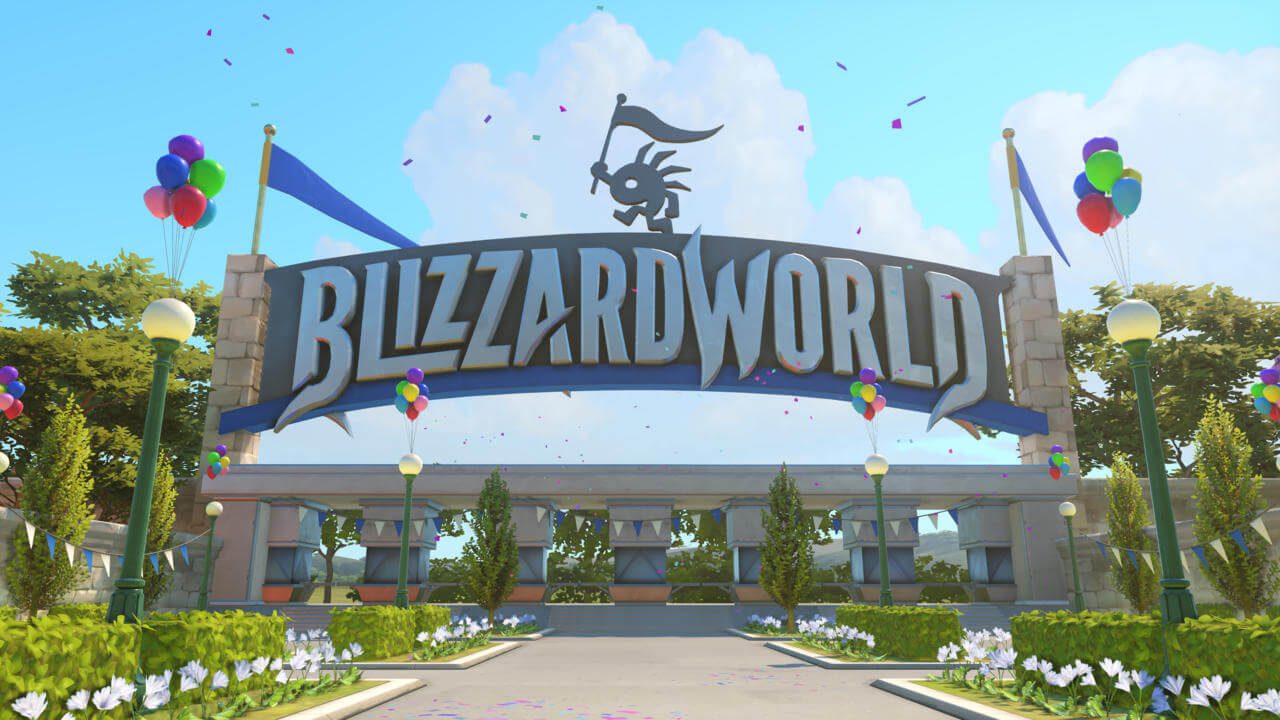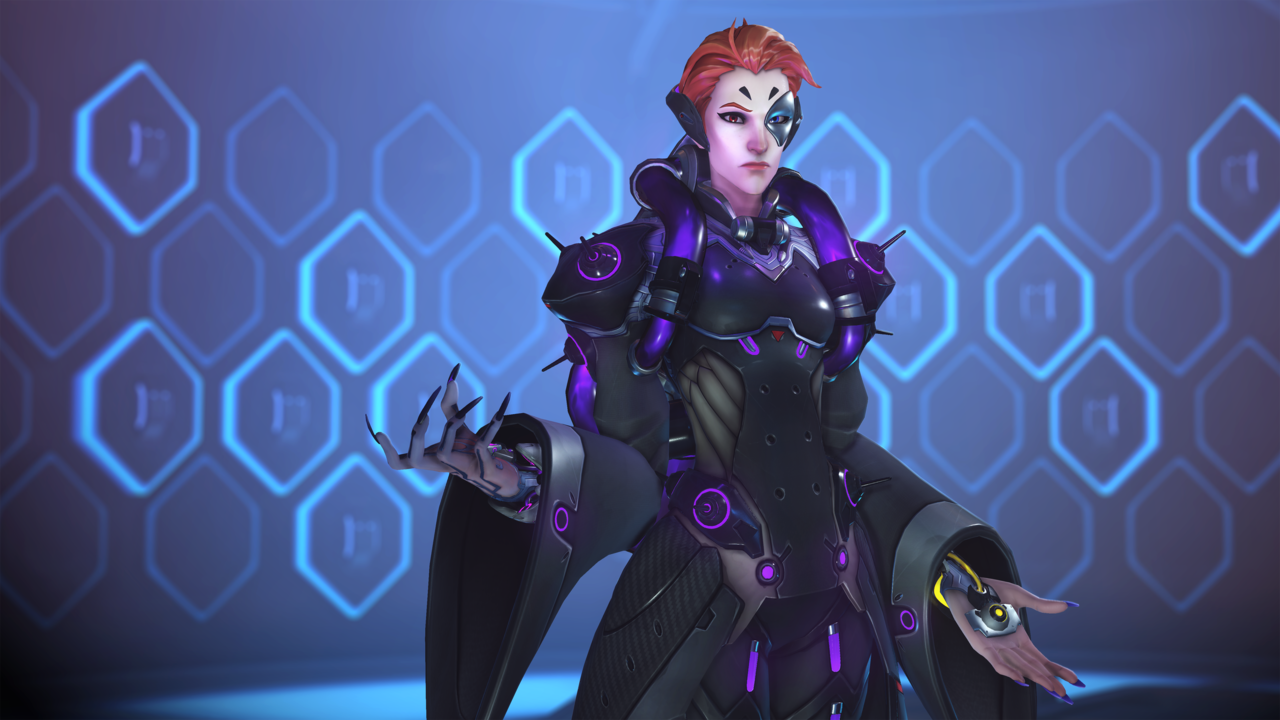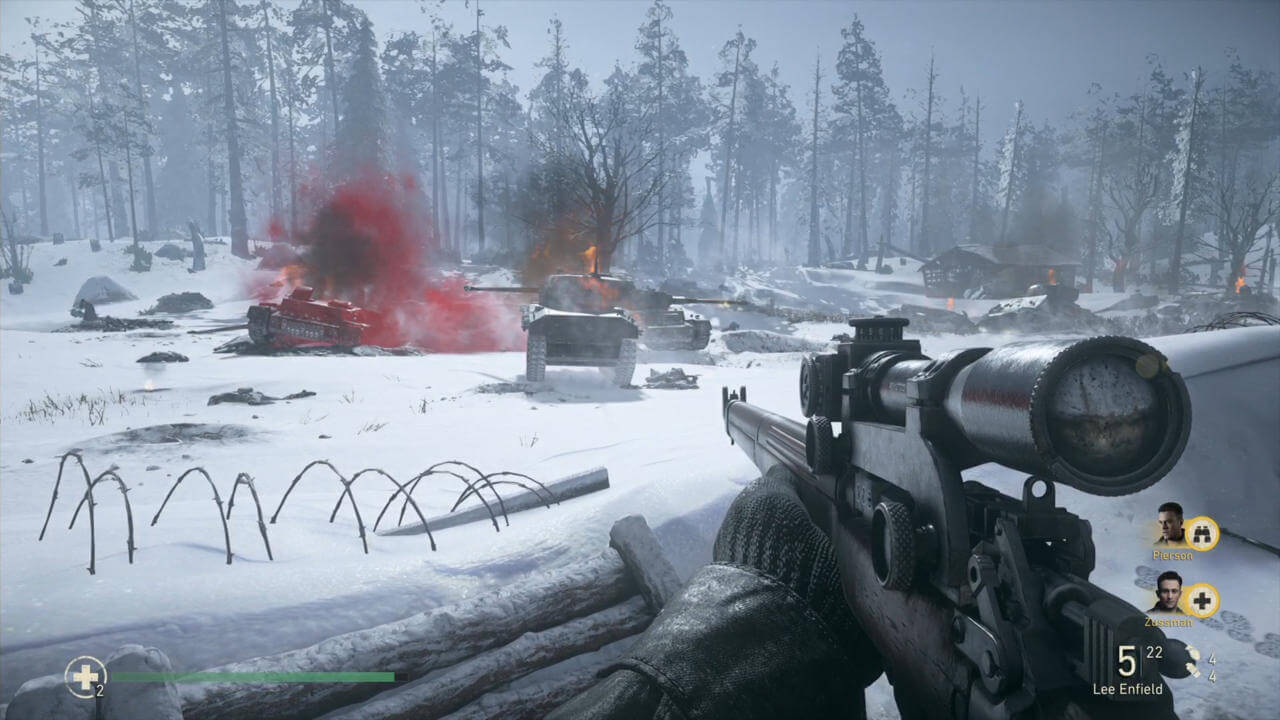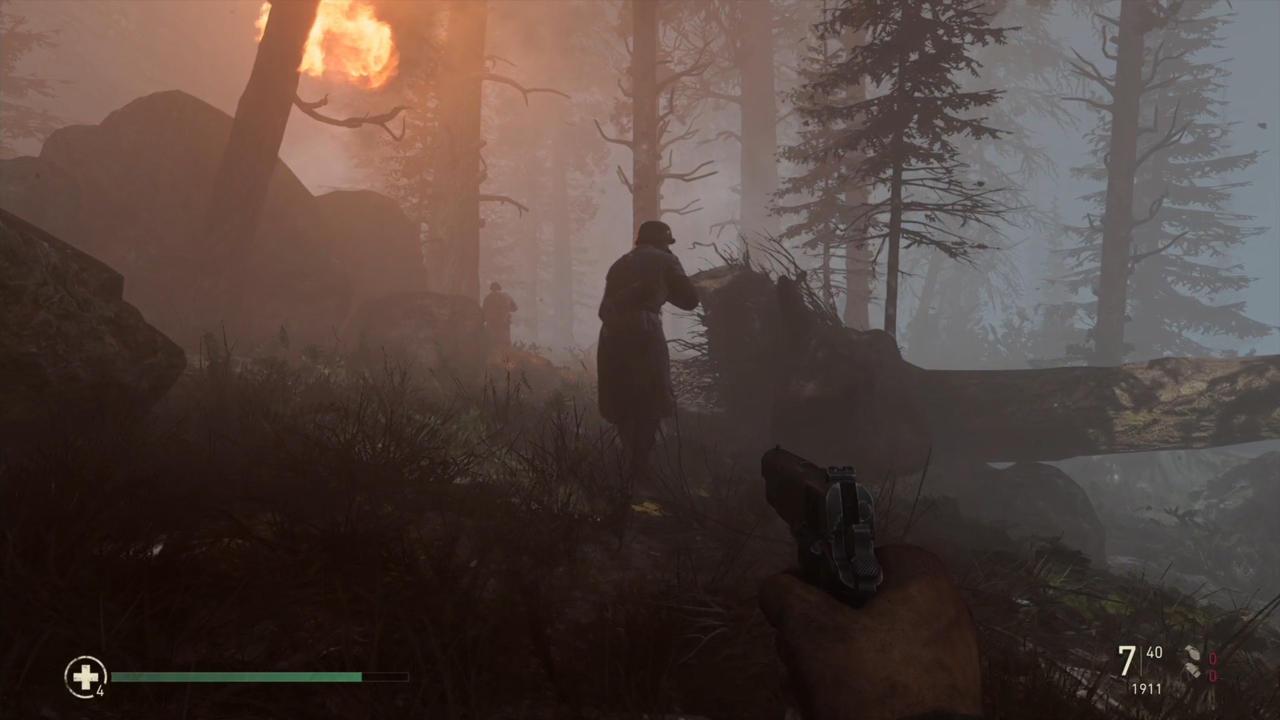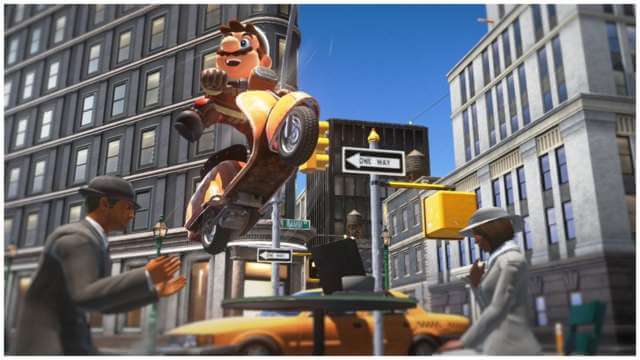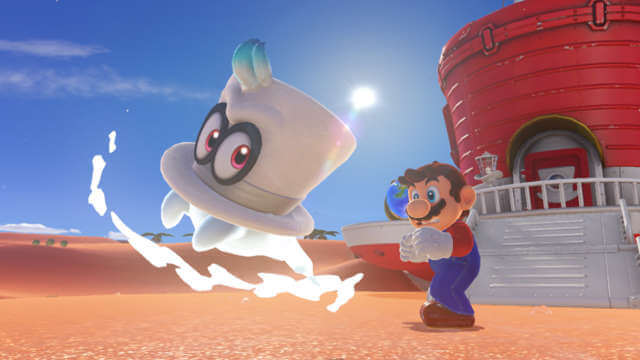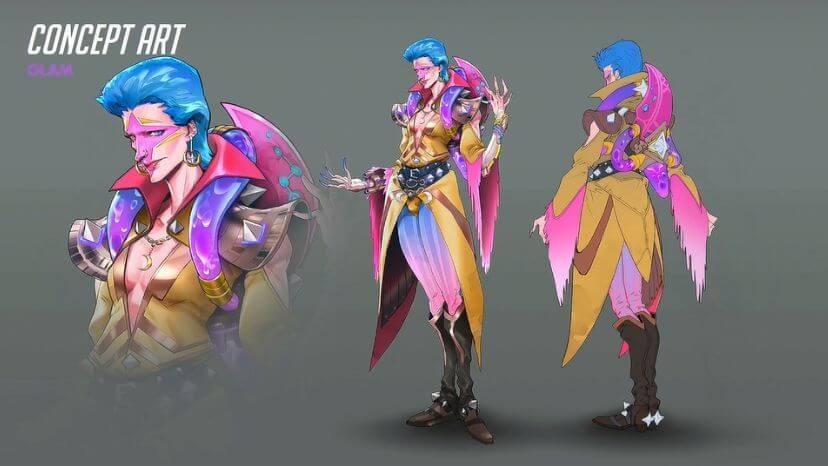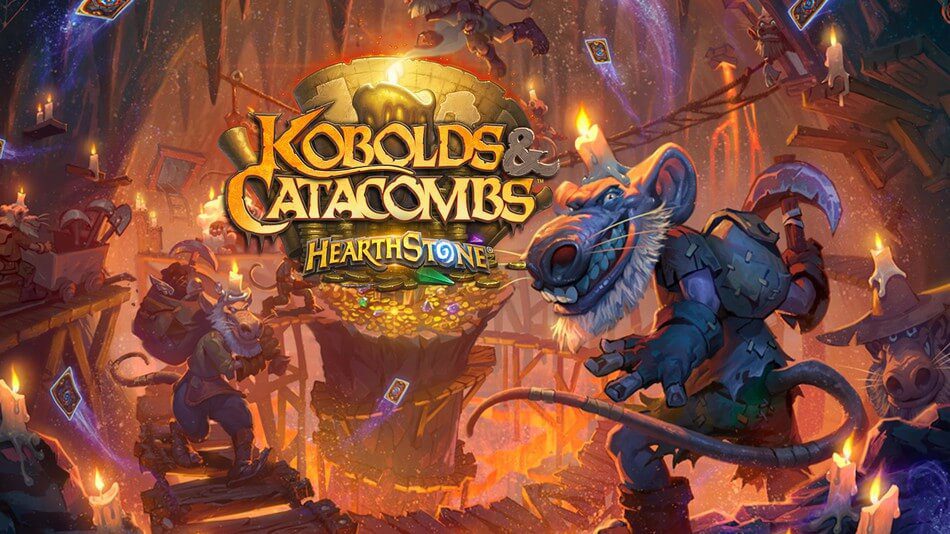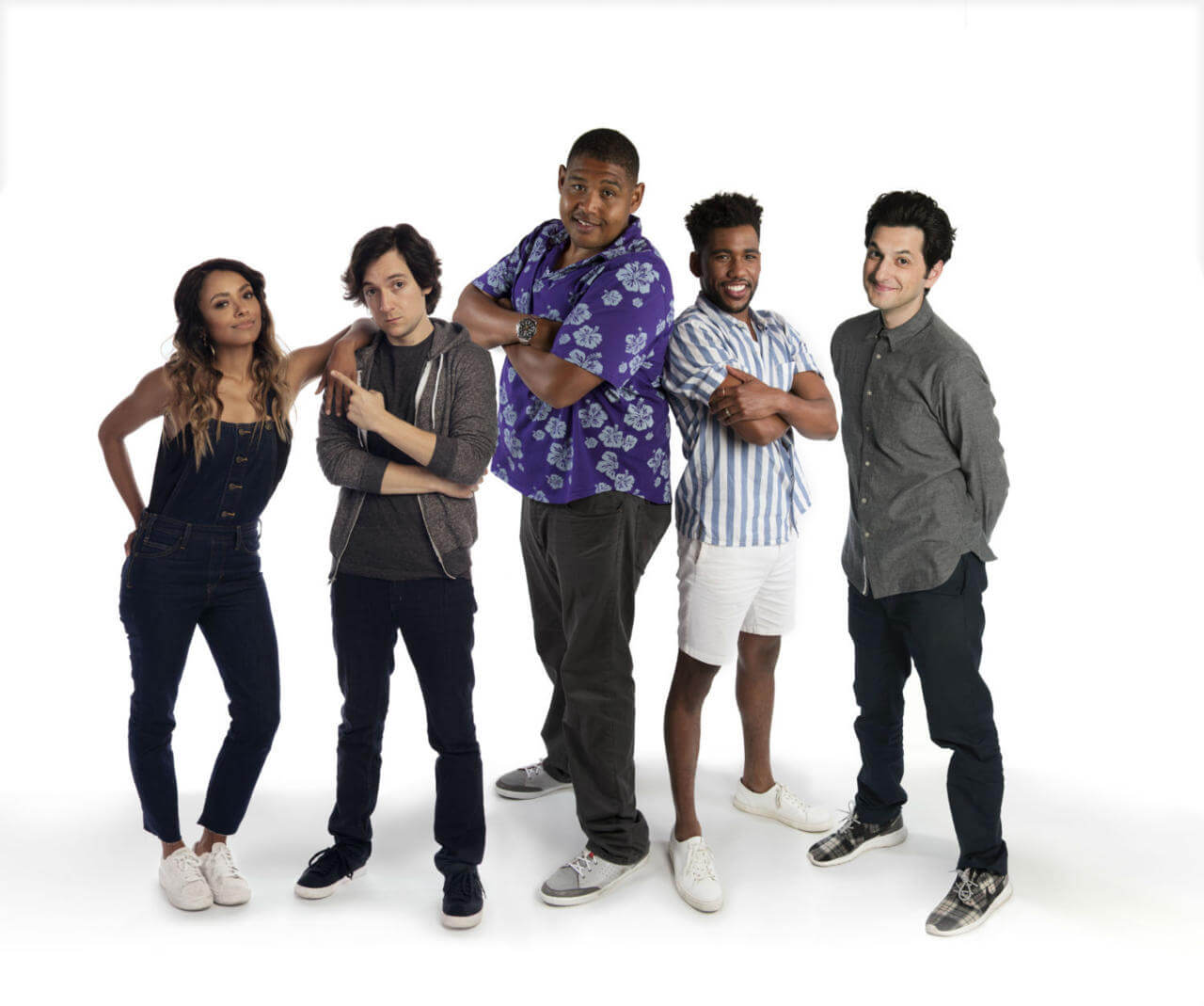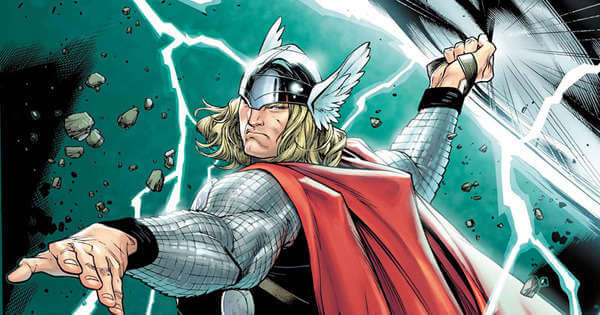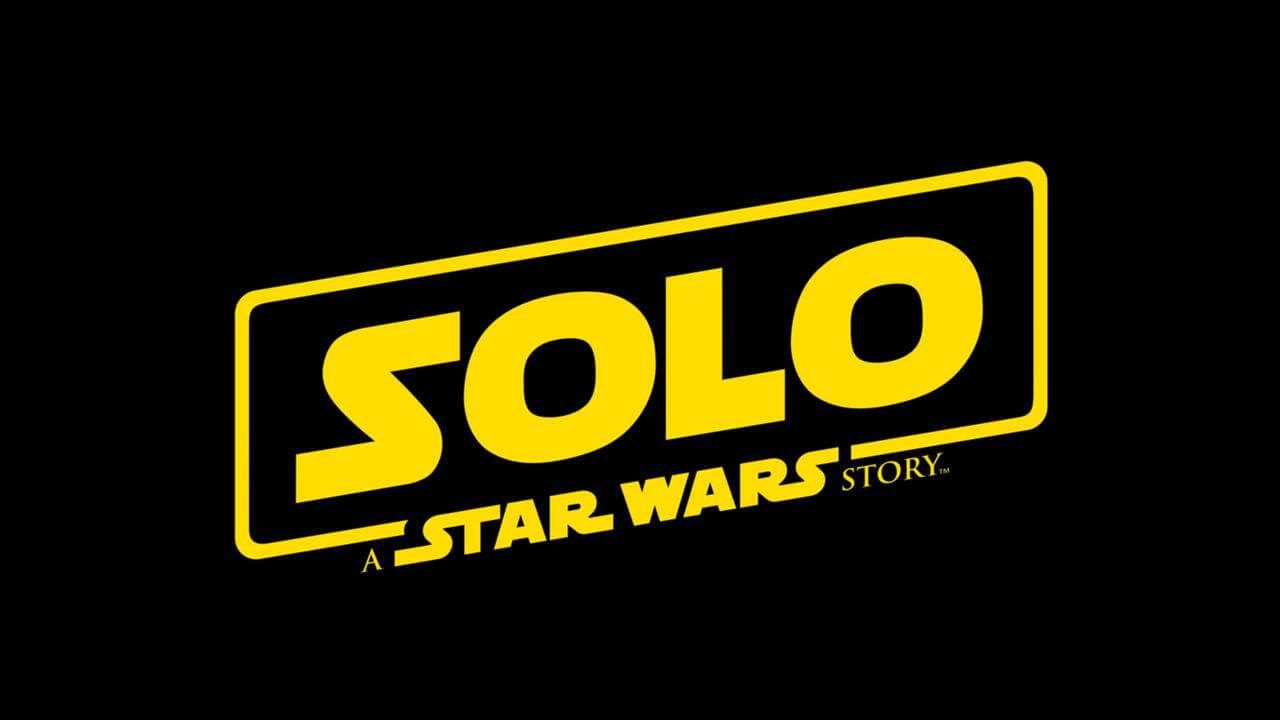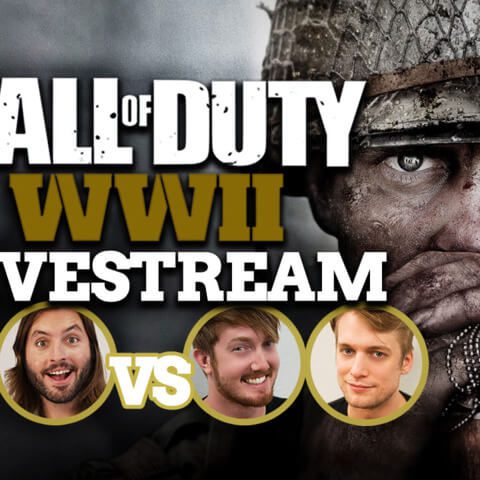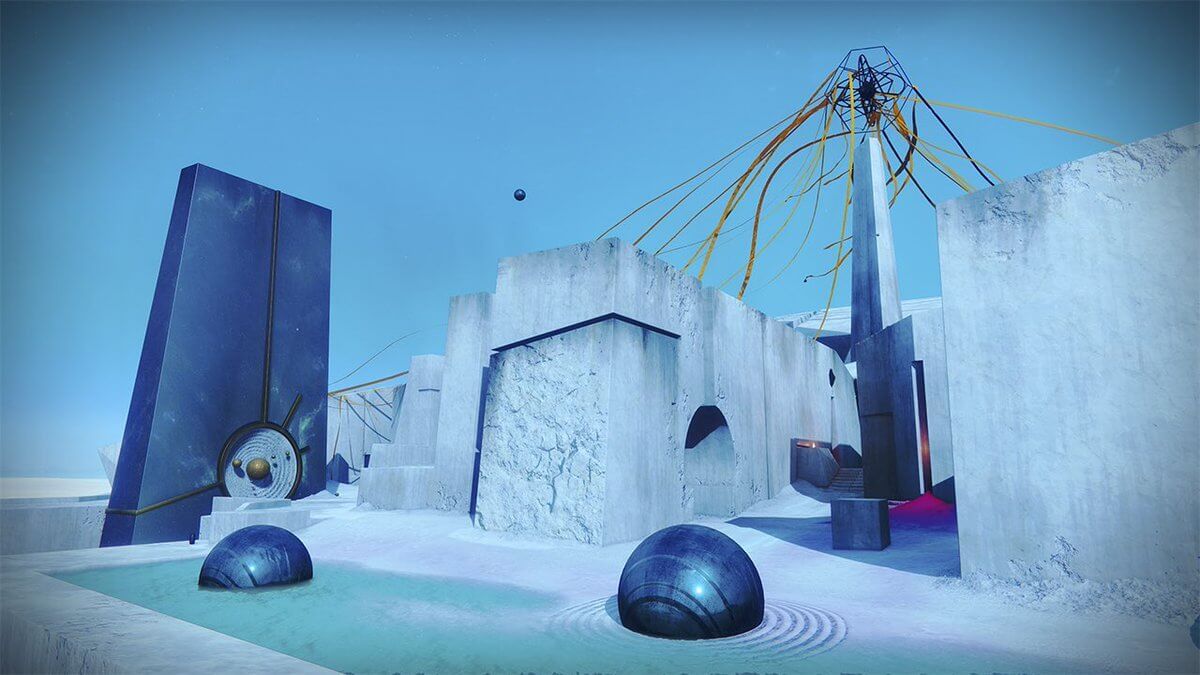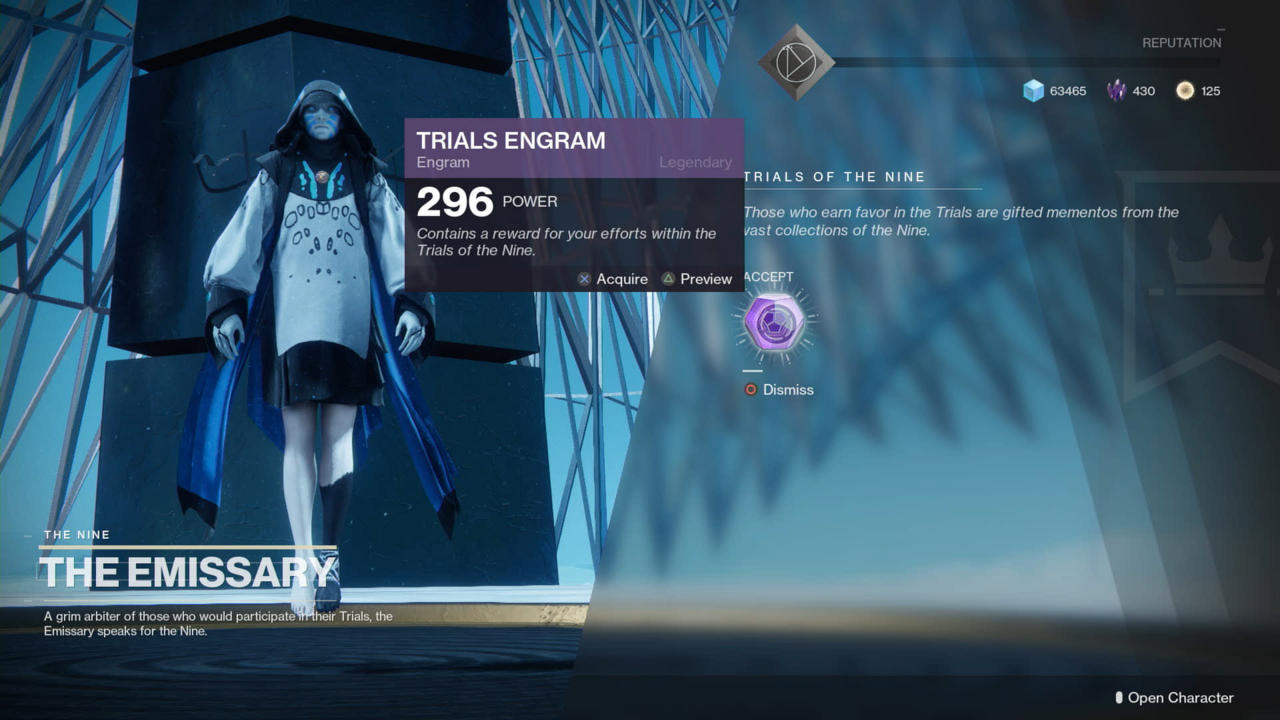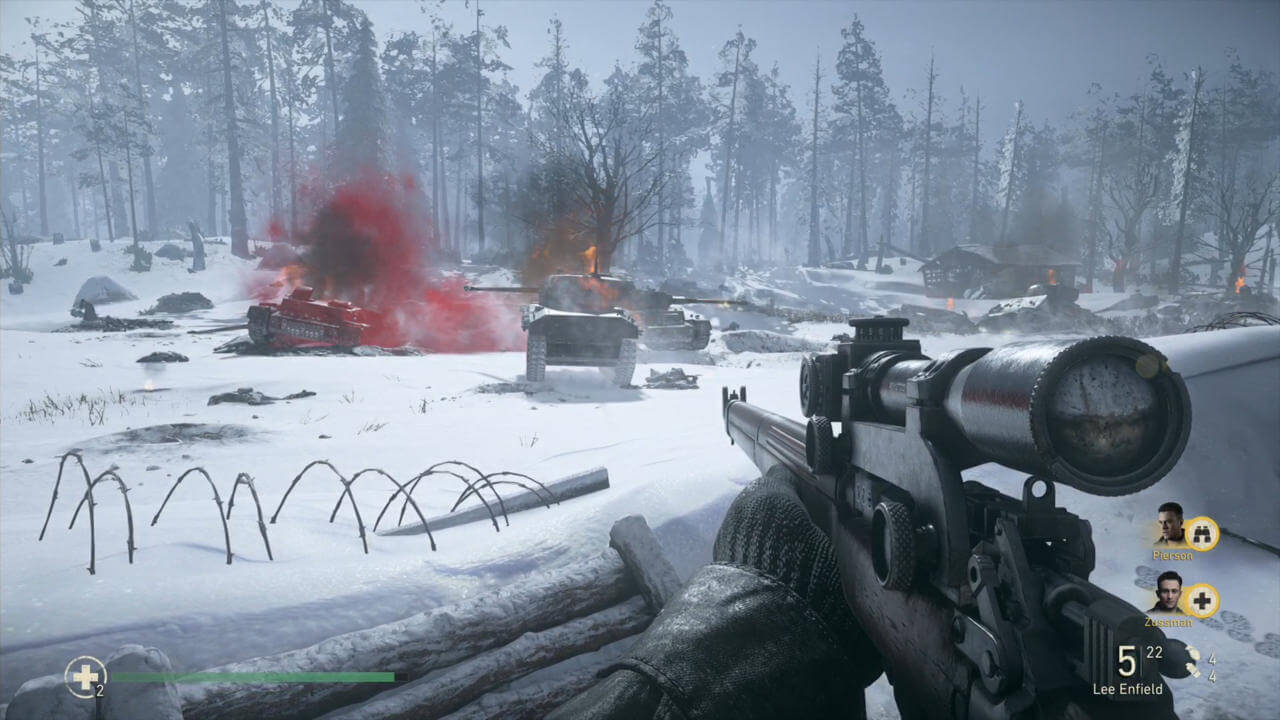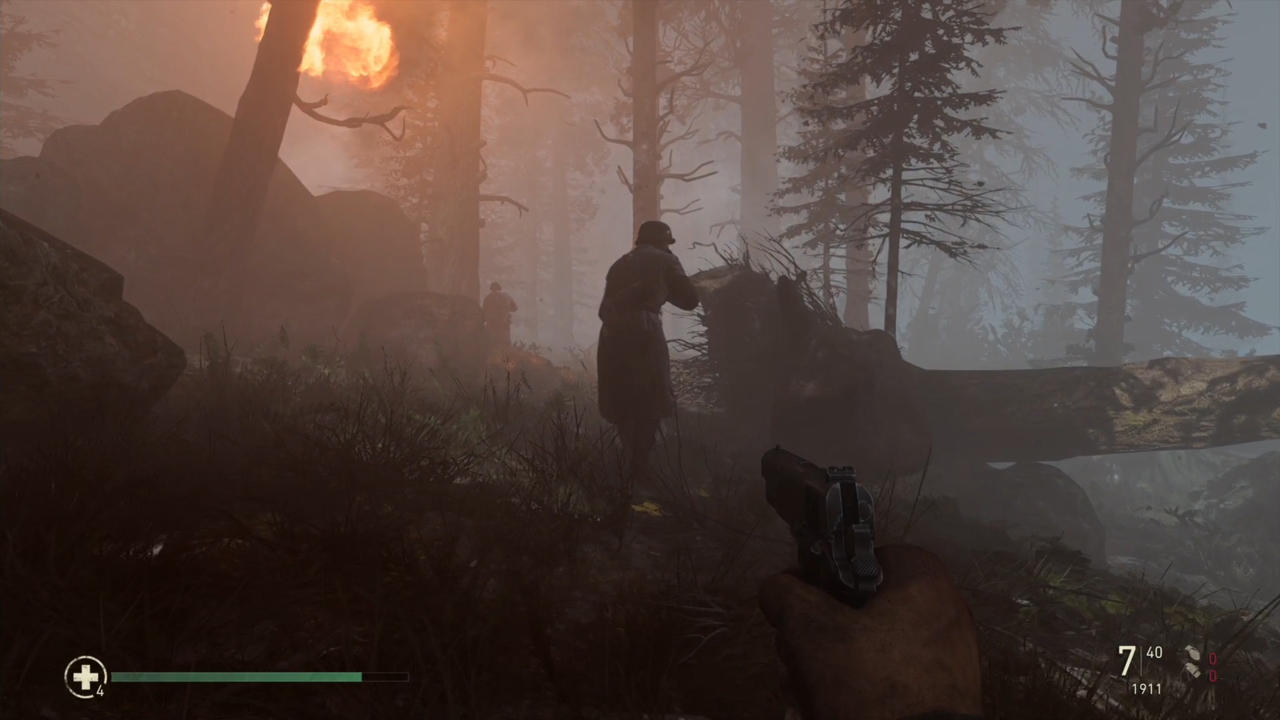Website: LINK
Schlagwort: reviews
-

Doom Switch Review In Progress
Reading Time: 6 minutesThere was a time when the thought of playing a game like 2016’s Doom on Nintendo Switch seemed too good to be true. Yet here we are, playing Doom on Switch. While it’s impressive to see it running on a portable system at all, Nintendo’s convertible console obviously can’t stand up to the performance of other consoles or PCs. Doom has endured a few compromises during its transition to a more modest platform, and depending on your tolerance for blurry visuals and fiddly controls, these cut corners may be a deal breaker no matter how fascinating the experience is at first blush.
One thing is certain, however: Doom’s campaign is all here, accompanied by the leaderboard-centric arcade mode. Just like before, you push through hordes of demons with bullets and gut-wrenching melee takedowns while a heavy metal soundtrack encourages you to go faster and hit harder. As enemies scale, your weaponry follows, offering a gratifying escalation of excitement befitting Doom’s reputation.
This is not to say that Doom’s campaign was perfect to begin with, and the same issues it had in the past persist on Switch. There’s a fair amount of repetition to deal with, some of which diminishes what should be a monumental milestone: landing on the ground in Hell. You wind up going to and fro multiple times, and despite the feverish action that carries you along the way, there is an amount of deja vu to contend with that saps your enthusiasm, if ever so slightly.










Ultimately, Doom’s fast-paced combat makes the occasionally repetitive journey worth taking, and the addition of arcade mode allows you to focus on action alone if you have little interest in the game’s so-so narrative or mission structure. The mode was introduced on other platforms in a post-release update and is designed for people who want to either practice their speedrunning skills or rank on internet leaderboards. Multipliers and other score-boosting elements have been introduced to encourage different tactics, and in some cases, to create an unlikely path around a map for optimal scores and efficiency.
Every stage of the campaign is unlocked in arcade mode from the start, and you’re allowed to pick and choose from the weapons that would normally be available to you, in addition to every rune perk (regardless of mission), when choosing your loadout. The freedom to hop back and forth throughout the game is a boon as a returning player, though it’s constructed in such a way that you might want to dip your toes in the campaign from the start to get your bearings if you haven’t played Doom since 2016. Unless you’re able to find the rare extra lives amidst all the chaos, one death is all it takes for your run to end in arcade mode.
One of the unfortunate realities of playing such a demanding game with Switch Joycons is that you’re bound by the limitations of small analog sticks. Doom offers sensitivity and camera smoothing adjustments that do help to a degree, but compared to playing on the full-sized Pro Controller, Joycons feel notably less reliable. And despite the options menu hinting at motion controls when docked, they don’t apply to aiming–you just waggle the right joycon to melee enemies, which isn’t as responsive or effective as simply pressing in the right analog stick.










Switch’s screen can also prove problematic when facing a room of sprinting demons. It may just be too small to provide the encompassing experience the game’s toughest challenges demand. It’s also strange to see the UI as it is, with a font size so small that you’ll be hard-pressed to quickly read menus when playing undocked. None of this is to say that Doom is unplayable or unenjoyable on the go, it’s just the least optimal way to play.
No matter how you approach playing Doom on Switch, you will undoubtedly have to contend with blurry visuals. Bethesda has promised the game will run at 720p regardless of whether your Switch is docked or not. In practice, even if Doom is outputting a 720p signal, It frequently shifts into lower gear, presenting not only low-res textures and models, but an overall muddied image that indicates dynamic resolution switching and stretching. There are rare moments when Doom appears sharp and clear, but you regularly see drastic swings in quality.
There’s nothing else like it on a portable system, but be prepared to face a handful of compromises, especially if you’re used to playing on other platforms.
If you can stand to look at a lesser version of Doom’s once captivating world, you’ll find that the game plays well enough on Switch so long as you’ve got a TV in front of you and a Pro Controller in hand. There’s nothing else like it on a portable system, but be prepared to face a handful of compromises, especially if you’re used to playing on other platforms.
For a more in-depth look at Doom, be sure to check out our original review of the PS4, Xbox One, and PC versions from 2016. Come back in a couple days for our final review after we’ve put Doom’s multiplayer modes to the test on Switch.
For more information on GameSpot’s approach to reviews in progress, please have a look at our Review Guidelines.
Website: LINK
-

Oure Review
Reading Time: 4 minutesSometimes it’s not clear what a game is trying to do, exactly, or what you were meant to get out of playing it. Sometimes a game just exists, and you finish it feeling neither richer nor poorer for having played. Oure is one such game; it’s pleasant in parts, but it lacks a clear vision and sense of purpose.
In Oure you play as a young boy or girl who, in the game’s opening moments, is pushed through a glowing door of light and finds themselves suddenly able to transform into a long and slender dragon, one obviously inspired by Chinese mythology. This type of dragon is a traditional sign of prosperity, and the game implies throughout that the actions you take may be repairing a broken world. Of course. There’s a personal cost–there usually is in this sort of narrative–but there’s not much in the way of pathos in this plot.
After a brief tutorial you’re unleashed into an open expanse of clouds and invited to fly around the game’s hub, following glowing markers to your next objective and collecting scattered blue orbs to progress. The dragon is simple to control, because there’s not actually a lot it can do–you can climb up or dive down while flying through the air, and speed up if your stamina has recharged. The dragon is pleasantly zippy, and snaking through the skies at fast speeds is inherently satisfying. Gliding through the air, dipping into clouds, chasing orbs, and simply existing peacefully as the dragon is the most enjoyable part of the game. Unfortunately, the appeal of flying around wanes fairly quickly–the sky holds few surprises, and there’s never a major change of pace or scenery. Wherever you go, it’s just clouds as far as the eye can see, and the few collectables and additional pieces of lore you can scavenge aren’t going to amount to anything significant beyond a few PlayStation Trophies. The novelty of flying around as a dragon wears thin because the game gives you little sense of purpose outside of your primary objective.

Your ultimate goal is to tame eight Titans, and to do so you need to collect the aforementioned orbs (although you can finish the game having collected less than a quarter of them) and activate pillars scattered around the map. Doing so is as simple as flying to them and finding their nearby activation point, at which point a Titan sequence will kick off. Most of these encounters are over within a few minutes, and combined they don’t add up to much. The Titans might be epic in scale but taking them down is either very simple or annoyingly fiddly, with the game never quite finding the right balance in between.
The relaxing tone of flying through the clouds is at odds with these Titan sequences, and it’s hard to identify a coherent link between the two parts of the game. The goal in each sequence is to grab every one of the glowing spires attached to a Titan, flying over them and figuring out the best way to approach the Titan’s weak points. Each one requires a different method, but there’s nothing here that feels particularly distinct–if you’ve played games with boss fights in them you’ll be familiar with many of the approaches. After you grab a spire you’ll have to solve a quick line-drawing puzzle, a la The Witness, to pull it out. Once all of them are pulled out the Titan will be tamed.

Among these sections there are quite a few good ideas, like scouring a creature’s back for puzzle clues or one sequence that resembles a simplistic arcade shooter (albeit one where you don’t shoot back), but these sequences aren’t rich enough to elicit a strong response or make them memorable. I never felt a sense of achievement beating any of them, and by the time I’d defeated all eight I was surprised that the game had so little to offer. The difficulty curve is all over the place, too. The second Titan, which will occasionally knock you back with gusts of wind unless you grab onto pegs scattered along its enormous back, took me the longest to complete out of any of them. It was frustrating rather than feeling like a fair challenge–there’s no indication of when the big gust is about to hit, and losing all your progress along the beast’s back every time the wind came felt unfair. Only one Titan encounter felt particularly unique in how it was designed, forcing you to switch between dragon and child forms to progress (and even that one has some frustrating structural issues).
There just isn’t very much to Oure beyond aimless exploring, since the battles are unsatisfying and brief and the collectables feel arbitrary. Lazily soaring through the clouds collecting orbs and finding secrets can be momentarily relaxing, but there’s no compelling reason to keep exploring the clouds once you’ve wrapped up the Titan fights. The plot doesn’t go anywhere, and the main action sequences feel like a small batch of concept proofs. Oure is the gaming equivalent of a daydream–it’s pleasant and light, but it feels like a distraction rather than something worth latching on to.
Website: LINK
-

Need For Speed Payback Review
Reading Time: 7 minutesNeed for Speed Payback is the kind of arcade racer that never requires you to lift your foot off the accelerator. Its brazen drifting is effortlessly achieved with aggressive cornering and feathering the brakes, and judicious bursts of nitrous are your best friend down any stretch of open road. There are few games of its ilk nowadays, but perhaps Payback points to a reason why. Despite its impressive visuals and contemporary trappings, Payback’s pick-up-and-play driving model harkens back to Need for Speed Underground and its Fast and the Furious-inspired street racing. Yet, unlike the series‘ heyday, Payback’s arcade sensibilities aren’t enough to save the game surrounding it from wallowing in mundanity.
Where Need for Speed was once heavily influenced by Vin Diesel and co.’s predilection for tuner cars and Japanese imports, it’s now taking cues from the more recent Dwayne Johnson-centric entries, with heists and over-the-top action as the order of the day. Set in the fictional US state of Fortune Valley, Payback’s derivative tale of betrayal and vengeance takes place against the backdrop of an expansive open world that surprises with its range and variety. The faux-Las Vegas of Silver Rock is a glistening urban jungle of glitz and greed that gradually broadens out into sun-kissed deserts, precarious mountain ranges, and the twisting turns that skirt through its forest wilderness. With a steady framerate and impressive draw distance, Fortune Valley’s slice of diverse countryside is picturesque at times, yet its locales are never distinct or memorable enough to make a lasting impression, and speaks to an open world that fulfills its role without ever standing out.
And the same can be said of Payback’s story. After our three plucky protagonists are double-crossed during a heist gone awry at the game’s outset, they set a plan in motion to exact revenge on their conniving defector and the ominous criminal syndicate she represents. It’s a simple enough conceit that gives purpose to the game’s structure, as you’re tasked with defeating various archetypal racing crews in order to earn a shot at your nemesis.











It’s the type of clichéd story you’d ideally want to turn your brain off for; yet there’s not a noticeable shred of self-awareness involved, and its earnesty does it no favours. The dialogue is hammy, but not in a fun B-movie way, and it frequently goes out of its way to reference everything from The Matrix to Dragon Ball Z, with some cringe-inducing millennial slang shoehorned in for good measure. There’s also the kind of forced banter that’s become commonplace in video games and is dutifully featured here–where, for example, calling someone „Lil‘ Ty“ is absolutely hilarious to anyone within earshot. All of this might have been bearable if the story was confined to intermittent cutscenes, but the narrative is so prevalent in everything you do that there’s little respite from its hackneyed storytelling.
Infrequent story missions do at least latch onto the pomp and spectacle of Payback’s Fast and the Furious inspiration, but it falters here, too. While these moments of vehicle-based histrionics feature its most visually arresting set pieces, they’re frequently spoiled when the game rips control away from you just as things are getting interesting. Whether it’s launching an 18-wheeler off a bridge, perilously driving alongside a truck on the wrong side of the road so your partner can hop aboard, or something as simple as using a car transporter as a ramp; as soon as the game deviates from the simple act of driving from point to point, control is wrestled away in favour of canned cutscenes. This might look more cinematic, but being forced to watch a scene you could feasibly control from behind the wheel is incredibly disheartening, and feeds into Payback’s inherent dullness.
This all combines to make a game that’s bland and unfulfilling, and is only exacerbated by the sheer amount of grinding you’re required to do.
Like previous Need for Speed games, you’ll pull up to checkpoints within the open-world, with race, off-road, drift, drag, and runner events providing plenty of variety. There are also Forza Horizon-esque speed traps and drift challenges spread out across the open-world, and these provide minor distractions on the way to each checkpoint. Race and off-road events speak for themselves, and drift competitions offer an anomalous thrill. Getting your car sideways is so easy that there’s a singular pleasure in simply seeing how long you can maintain a drift for, while drag events are short and sweet but soon grow repetitive as you’re essentially just staring at a meter to time your gear shifts. Races and time trials are occasionally interspersed between the traditional drag events in an attempt to break up the monotony, but having to heave these cumbersome vehicles around the twisting turns of a race track isn’t a great alternative. Meanwhile, runner events focus on police chases and timed dashes between various points on the map.
The problem is, outside of drift events where it’s a non-factor, the sense of speed in Payback is startlingly lacking. The speedometer may say so, but there’s no tangible sense that you’re hurtling down the road at 160 miles per hour in a fuel-guzzling death trap. Motion blur attempts to sell a fast pace, but never captures the sensation that the world’s rushing by. It’s all surprisingly pedestrian, with passive AI racers and police chases that are elementary. The cops might be aggressive but you never have to outthink or outmaneuver them; escaping is as simple as reaching a specific checkpoint. Pursuits are just glorified time trials, and even the damage model lacks steel-crumpling detail, so takedowns are underwhelming.










This all combines to make a game that’s bland and unfulfilling, and is only exacerbated by the sheer amount of grinding you’re required to do. Each event in Payback is gated by your car’s level in the most egregious case of caRPG mechanics in recent memory. Each vehicle you own has six slots for Speed Cards that represent various parts under the hood (like the gearbox and ECU) and come with perks that will increase particular stats and your car’s overall level. Each event has a recommended level, and since there’s no scaling this means you’ll usually have to spend upwards of 40 minutes or so collecting Speed Cards to upgrade your car. It’s possible to win races if you’re a smidgen below the recommended level, but any more than that and the AI is likely to leave you in the dust. The AI might be lacklustre, but there’s no way to compete when they’re in significantly faster cars.
You can purchase these Speed Cards with in-game currency at tune-up shops, but whether they have useful parts or not is down to timing, with stores refreshing their stock every 30 minutes. But you also need this cash to buy new cars. You can trade in unwanted Speed Cards for part tokens, with every three able to be exchanged for a new card, and you also earn a single card for each event you win. But this means you’re constantly reaching these frustrating choke points, where the only way to progress through the story is by going back and replaying old events in order to earn enough Speed Cards to bump up your level. There’s even a Trophy / Achievement for replaying races that literally mentions grinding in the description. And when you factor in the ability to expedite the process with microtransaction loot boxes, it feels geared towards encouraging you to part with real money unless you want to spend time replaying lukewarm parts of the game over again. There’s nothing fun about repeating events, especially against opponents that are now at a significantly lower level than you are. But the alternative solution of spending real money doesn’t bear thinking about.
Need for Speed Payback’s banal racing is only magnified by this focus on grinding. The simple, almost retro, handling model provides occasional bouts of fun, but it’s never enough to escape Payback’s flaws, with an unwillingness to let you partake in its most hair-raising moments, and a general drabness that seeps into every layer of the game. Fast and Furious, this is not; and that’s a disappointing outcome.
Website: LINK
-

Shazam Movie Finds Its Billy Batson In Disney Channel Star
Reading Time: 2 minutesShazam has found its Billy Batson. After Zachary Levi joined the movie in the titular role of the superhero, New Line has now cast an actor to play the young boy who utters the magic word „Shazam“ to transform into him.
Asher Angel will portray Billy in the film, according to The Hollywood Reporter. The 15-year-old actor is currently best known for his role as Jonah Beck on Disney Channel’s Andi Mack, playing the titular character’s love interest. He previously appeared as a guest star on an episode of Criminal Minds: Beyond Borders in 2016.

As Shazam gears up to start production in early 2018, Angel joins a growing cast that includes Levi and Annabelle: Creation star Grace Fulton, who will play a friend of Batson’s. Additionally, Kingsman: The Golden Circle star Mark Strong is reported to be in talks to play the film’s villain, Doctor Sivana.
The movie will be directed by David F. Sandberg, whose previous feature credits include Annabelle: Creation and Lights out. Sandberg confirmed the casting himself on Instagram, where he has been documenting Shazam’s pre-production process–and all of the Coke Zero he’s been drinking while working on the film.
Shazam is scheduled to arrive in theaters in April 2019. Before that, the DC universe will be expanding with the release of Justice League on November 17, uniting Batman (Ben Affleck), Wonder Woman (Gal Gadot), The Flash (Ezra Miller), Cyborg (Ray Fisher), and Aquaman (Jason Momoa). Momoa will then return to the big screen to team with Amber Heard in a standalone Aquaman film, releasing in December 2018.
Website: LINK
-

Xbox One X Review: A More Future-Proof Xbox For 4K And HDR
Reading Time: 13 minutesLike Sony’s PlayStation 4 Pro before it, the Xbox One X represents a mid-generational upgrade that offers a significant boost in performance over its predecessor. Microsoft says the console will allow developers to render games natively at 4K, offer high-dynamic range for more accurate colors, improve load times, and bolster framerates. While we encountered issues with some of these enhancements, the Xbox One X has the potential to really soar when its power is leveraged effectively.
Table of Contents [hide]What’s in the Box?










The Xbox One X retails for $500 / £449 / AU $649. For that, you get the console, a 60-inch long power cable, a six-foot high-speed HDMI cable (needed for 4K HDR), Xbox One controller, two AA batteries, a 14-day free trial for Xbox Live Gold, and a one-month subscription to Xbox Game Pass.
Design
The console measures 30 x 24 x 6 cm (11.8 x 9.5 x 2.4 inches), which technically makes it the smallest Xbox console yet. This is really impressive when you consider the fact that it has an integrated power supply unit, like the Xbox One S before it. This means that you don’t have to deal with an obnoxiously large external power brick like with the original Xbox One. Despite its small size, however, it’s the heaviest Xbox One at 8.4 pounds.
Aesthetically, it looks a lot like a matte black Xbox One S. Like the S before it, it has a physical power button, which strays away from the original Xbox One’s capacitive touch equivalent. This is a welcome tweak considering it was often prone to accidental shutoffs. The front of the console also sports a 4K HDR Blu-Ray drive, one USB 3.0 port, and a controller pairing button. The ports on the back remain identical to the S; from left to right it offers: HDMI out, HDMI in, two USB 3.0 ports, IR out, S/PDIF, and Ethernet. The X is backwards compatible with the existing Xbox One accessories, though you’ll need a Kinect dongle if you want to use Microsoft’s recently discontinued camera system.
Overall, the design is simple and clean. It has plenty of ventilation through the back and when you couple this with its compact size, you get a sense that Microsoft prioritized function over a flashy design here. Luckily, it still has an unassuming aesthetic that should fit right in with most personal entertainment centers.
Specs
-
CPU: x86-64 2.3GHz 8-core AMD custom CPU
-
GPU: 6 TFLOPS, AMD Radeon-based graphics clocked at 1172MHz with 40 compute units
-
Memory: 12GB GDDR5
-
Storage size: 1TB HDD
-
External dimensions: 30x24x6 cm/11.8×9.4×2.3 in
-
Weight: 8.4 lbs/3.8 kg
-
Optical drive: 4K UHD Blu-ray
-
Input/Output: Power, HDMI 2.0b out, HDMI 1.4b in, three USB 3.0 ports, IR out, S/PDIF, gigabit Ethernet
-
Networking: IEEE 802.11ac dual band (5GHz and 2.4Ghz), 2×2 wireless Wi-Fi with Wi-Fi Direct
-
Power consumption: 245W
Underneath the hood, there’s been a lot of talk about the Scorpio Engine fueling the system. At the heart of it is AMD’s x86-based 2.3GHz 8-core CPU, which is clocked 550MHz faster than the original Xbox One’s octa-core equivalent.
Arguably bigger gains come from the integrated graphics processor, which uses a custom AMD Radeon-based solution that features 40 compute units clocked at 1172MHz. This provides six teraflops of graphics performance, which is over 4.5 times that of the original Xbox One and over 1.4 times that of the PS4 Pro, its nearest console competitor. This gives it enough horsepower to run certain games at 4K (2160p) with high-dynamic range colors enabled.
The Scorpio Engine is cooled via a vapor chamber cooler, which houses a small amount of water that evaporates into steam when it gets too hot. It then reverts back to liquid when the system cools back down. You typically only see vapor chambers in high-end graphics cards, but they’ve been known to work effectively, and it’s nice to see Microsoft implement it here.
While the original Xbox One and PS4 Pro both use 8GB of shared memory across their respective CPUs and GPUs, the Xbox One X features 12GB of GDDR5 RAM that’s capable of delivering 326GB/s of memory bandwidth. This is unprecedented for a console. Microsoft says that games will be able to leverage up to 9GB of it, with the rest going to operating system-related tasks.
While we would have preferred an SSD, Microsoft says that the Xbox One X’s 1TB hard drive is 50 percent faster than the original’s 5,400rpm solution; though we weren’t able to validate this claim in our testing, which we’ll discuss below. Like the original Xbox One before it, the X supports external USB drives for added storage.
Graphical Enhancements
The main reason to get excited about the Xbox One X is for the prospect of graphical enhancements. Rather than dictate a certain set of graphical targets for developers to hit, Microsoft lets developers use the console’s extra processing power as they see fit. Games that are tuned to take advantage of the Xbox One X will carry an „Xbox One X Enhanced“ label.
From what we’ve seen so far, many developers are opting to render games at 4K, which is four times the 1080p resolution of the vanilla Xbox One. Some are also adding HDR support to provide a wider color gamut and higher contrast ratio between white and black levels.
While the Xbox One X is geared towards users with 4K HDR displays, traditional 1080p TVs aren’t entirely left in the dust as some developers may choose to use the extra processing power to improve lighting or to add dynamic shadows. Some games will also run more smoothly on the X. Standard HDTVs will also get supersampling, which renders games at higher resolutions and then down samples or „shrinks“ them to a lower resolution display. This acts as an effective form of anti-aliasing that reduces undesirable jaggy effects.
While only Xbox One X-enhanced games will reap some of the aforementioned graphical tweaks, Microsoft says that the Xbox One X has tweaks at the hardware level to implement anisotropic filtering to every game in existence. This can help textures off in the distance look clearer.
Visual Analysis
To analyze the visual enhancements that the Xbox One X offers, I compared it against the original Xbox One, a high-end gaming PC, and Sony’s PlayStation 4 Pro with multiple copies of games whenever possible.
I hooked up all the systems to the same TV: a 55-inch 4K HDR Samsung UN55KS8000 and then swapped between the HDMI inputs to conduct visual A/B tests. Because the Xbox One X can also bolster 1080p graphics, I also connected both systems to a 55-inch 1080p TV and similarly analyzed the visual differences there.
While a wide variety of Xbox One X-enhanced games are on the way, unfortunately, at the time of this writing, only a handful of games were patched to take advantage of the new hardware. The available games that we tested include Gears of War 4, Killer Instinct, Super Lucky’s Tale, FIFA 18, Rush: A Disney-Pixar Adventure, and Disneyland Adventures. You can expect us to do more graphics comparisons in the future as the Xbox One X enhancement patches are released.
Gears of War 4
Testing the third-person shooter on the 4K HDR TV, the resolution bump is immediately apparent from the initial menu screen, which showcases a real-time rendering of protagonist JD Fenix’s face. With the Xbox One X, the pores on his cheeks provide a real sense of depth, almost like you could fall into them…if you were tiny enough. On the original Xbox One, they comparatively look more like fuzzy dust particles.
You really get much better detail overall with less jagged aliasing issues running on the X. This is especially evident around characters‘ hair or distant items with straight lines. Overall, it amounts to a cleaner, sharper image.
Gears of War 4 also sports arguably the best implementation of HDR we’ve seen in a game yet. The high-dynamic range allows colors to appear more realistic. The original Xbox One looks much more washed out and muted in comparison. The X’s high-contrast implementation also provides really dark black levels, which, again, contributes to a more realistic image that pulls you into the scene.
In terms of pure image fidelity, it surprisingly looked better than our high-end gaming PC equipped with a GTX 1080 running the game maxed out, as it offered extra dynamic shadows that don’t seem to be available on the PC. Unfortunately, the game doesn’t run at 60 FPS here on the Xbox One X, so a high-end PC will be able to beat it in terms of framerate.
Fortunately, Gears of War 4 also offers a performance mode that eschews the native 4K rendering in favor of a smoother experience. Here, it looks visually closer to its orignal Xbox One counterpart, but often felt like it was running at 60 FPS.
Hooking everything up to the 1080p TV, the Xbox One X does a good job making the display punch above its standard HD resolution. While there are still some jaggies, supersampling effects provide a very potent form of anti-aliasing. While the difference between the Xbox One X and the original Xbox One isn’t as prominent on a standard HDTV, the overall image still looks noticeably clearer with less noise. The Xbox One X can effectively make your 1080p TV look as good as it possibly can.
Super Lucky’s Tale
When it comes to Playful’s platformer, there’s much less to analyze. Super Lucky’s Tale supports 4K 60FPS with the Xbox One X and 1080p 30 FPS on the original Xbox.
Whether playing on the 4K TV or 1080p display, the frame rate increase with the X is noticeably smoother. The game looks very crisp running on the 4K TV with the Xbox One X. When hooked up to the 1080p TV, the X’s supersampling does make it look slightly sharper than its Xbox One counterpart, but it’s not super prominent unless you’re really looking for it up close.
Killer Instinct
Killer Instinct already runs at a locked 60 FPS on the original Xbox One. The X simply bumps up the resolution to 4K, which mitigates most of the jaggies.
The game doesn’t support HDR, and the Xbox One X makes shadows look too dark on our HDR display. We didn’t encounter this issue running the game on our traditional (non HDR) 1080p display, however. Here, the original Xbox One looked washed out in comparison to the X. We also noticed improved anti-aliasing and better anisotropic filtering that made details in the background a little more clear.
FIFA 18
FIFA 18 is the only Xbox One X-enhanced game available at the moment that’s also enhanced on the PS4 Pro. When we pitted the Xbox One X and PS4 Pro head to head here, it was honestly hard to tell the difference. Both platforms render the game at 4K, but neither system is able to achieve a stable 60 FPS.
The biggest visual difference we could tell between the two consoles was that color on the Xbox One X looked more realistic on our 4K HDR TV. On the PS4 Pro, the grass looked a bit too „nuclear green“ in comparison, which gave it a more „videogamey“ aesthetic.
Beyond that, if you’re looking for more graphical comparisons between the two consoles, you’ll have to wait until we have access to more Xbox One X enhanced games post launch.
Rush: A Disney Pixar Adventure
This family-friendly mini-game compilation supports 4K and HDR through the Xbox One X. The enhancements allow the game to feature vibrant colors and look sharp, but it clearly isn’t able to run at a smooth 60 FPS, as we encountered the odd, occasional hiccup. This is disappointing considering Rush doesn’t look very graphically demanding, especially not compared to something like Gears of War 4. This could be due to how the game was originally designed or may speak to the quality of the update.
Disneyland Adventures
Like Rush, Disneyland Adventures supports 4K and HDR through the Xbox One X’s enhancements, but, again, the frame rate didn’t see an improvement with it running below 60 FPS. Despite the official HDR support, the game ended up looking a little dim on our 4K HDR television.
4K HDR Video Support
To test out the Xbox One X’s 4K HDR video playback capabilities, Microsoft provided us with a 4K HDR copy of BBC’s Planet Earth II series.
On our 4K HDR TV, the nature documentary looked stunning. The visuals were sharp and crisp, and it was easy to make out every strand of hair on a sloth and every texture of each tree branch.
The color reproduction is equally amazing. The blues of the ocean and the greens of the forest are realistically portrayed. The bright rays from the sun pierced down through tree canopies very convincingly. This is about as good as it gets as far as home theater setups go.
User Interface
Microsoft released its overhauled Xbox One dashboard last month. While there is a small learning curve to new user interface, it’s snappier than past iterations. We did encounter some menu slowdown while we were downloading a bunch of games and quickly flipping through all the tabs, but it’s certainly not as sluggish as past updates.
The new dashboard also allows you to filter games that are Xbox One X Enhanced, though it doesn’t tell you what specific graphical enhancements the console offers.
Noise, Heat, Power Consumption, and Boot Times
Sitting in the dashboard, the Xbox One X runs silently. When we fired up Gears of War 4, a slight hum from the cooler arose, but it’s impressively whisper-quiet.

Using Flir One’s heat camera, we measured the Xbox One X’s temperature. The console does get a bit warm, however. Just sitting in the OS, we clocked it at 54.3 degrees Celsius. When we fired up Gears of War, it rose to 61.7 degrees C. It’s not scorching hot to the touch by any means, but it is significantly hotter than the PS4 Pro we tested last year, which we saw hit 46.1 degrees Celsius when we were gaming on it. Interestingly, the temperature dropped to 57 degrees C when we switched over to Gears of War 4’s Performance mode, which optimizes frame rate over visual fidelity.
We also saw this mirrored when we measured the system’s power draw. The Xbox One X consumed 144 watts of power under Gears of War 4’s Performance mode, but 174 watts in the higher fidelity Visual mode.

In terms of boot times, Microsoft asserts that the Xbox One X’s hard drive is 50 percent faster than the original Xbox before it, and while we did see improvements here, they weren’t as good as the company’s claims. From a cold boot, the X took 7.5 second to turn on. This is just 0.6 seconds faster than the original Xbox One. Loading up Gears of War 4, the X took 50.8 seconds to boot to the main menu, which was roughly seven faster than the Xbox One. When I loaded up the same Act 1 mission, both consoles took 31 seconds.
When I fired up Killer Instinct, the X launched the game in 37.7 seconds, whereas the original Xbox One did so in 44.1 seconds. While there’s generally a measurable performance gain when it comes to load times, it’s not as significant as Microsoft is claiming thus far.
Conclusion
As Xbox head Phil Spencer has suggested, the Xbox One X shares a lot in common with the company’s high-end Xbox One Elite controller. Both devices are designed for enthusiasts through and through, and are priced accordingly. This makes the less cost-prohibitive Xbox One S a better fit for most people.
While the Xbox One X is an expensive box, from a hardware standpoint, you’re getting a very powerful and capable machine. You’ll be hard pressed to build a comparably powerful PC for $500. On top of that, you get a 4K HDR Blu-ray player, which can cost several hundred dollars on its own.
The Xbox One X isn’t perfect. From what I can tell so far, its load times don’t live up to Microsoft’s claims, and I noticed some poor HDR implementation, but when a developer is able to take advantage of the hardware, you can get sharper visuals, more vibrant colors, better performance, and added graphical bells and whistles. Playing Gears of War 4 on the Xbox One X really feels like it’s the way it’s meant to be played.
Should you get an Xbox One X? That answer should largely depend on whether you’d be happy with the console’s library of games. You can check out a list of all the Xbox One X-enhanced games here. If you’re happy with the lineup and are thinking about jumping in, allow me to outline three different scenarios for you. If you game on a 1080p TV and don’t have any plans to upgrade to a 4K one, the Xbox One S is going to be a better fit for you. While you will get some graphical enhancements with the X, you don’t really get your money’s worth if you don’t have a 4K HDR TV. But what if you already own a 4K HDR TV and an Xbox One? In this case, I’d only recommend getting the X if you have the disposable cash to spare for the increased visual fidelity and performance benefits. If you have a 4K HDR TV, don’t have a current gen console, and are looking to purchase one, however, the Xbox One X is a great choice.
Website: LINK
-
-

Horizon: Zero Dawn – The Frozen Wilds Review
Reading Time: 5 minutesWith its incredible-looking environments and an ornate combat system, Horizon: Zero Dawn is an easy game to slip back into (even if you’ve ignored it for the better part of a year). The Frozen Wilds expansion makes a return visit even more enticing with new gear and challenges to seek out in the frozen north, with fresh enemies balanced to fit into the game’s latter half. There’s also a new storyline, which slightly expands your knowledge of the past and hints at events to come. Those revelations alone aren’t terribly exciting, but as an excuse to revisit one of the best games of the year, Aloy’s new journey hardly suffers from that small disappointment.
The Frozen Wilds primarily takes place in a previously unforeseen stretch of land that encompasses roughly 10-15 hours of new side quests and errands. Snow isn’t new to Horizon, but it’s never felt as ubiquitous as it does here. Mountain passes, valleys, and forests are choked with snow both on the ground and in the air. And when the sun cuts through the atmosphere just right, individual snowflakes take on gorgeous pink hues that make an already pretty game even prettier.
This scenic territory belongs to a tribe known as the Banuk, who have long lived in isolation from the rest of society. They follow a strict code of conduct that has more to do with self-reliance and pride than it does with justice and order. The constraints therein put pressure on Banuk in various ways, and most of your objectives in The Frozen Wilds focus on helping individuals overcome their personal struggles with tradition.











Your primary task has bigger implications, however, as a Banuk shaman living on the outskirts unknowingly holds the key to a new chunk of historical data and a new facet of the technological powers operating behind the scenes. Both this quest line and personality-driven side quests deliver heaps of dialogue, which, like Horizon’s exchanges at large, range from heartfelt scenes to perfunctory filler.
But as excuses to clash with new sparking mechanical beasts, practically every mission in The Frozen Wilds feels valuable. The three fresh monsters are hugely formidable opponents that require considerable effort to defeat, and they are joined by a new power tier for every enemy–one step above „corrupted“–which makes pre-existing machines faster and stronger than ever. As you’re shepherded along to new points on the map, you’ll also discover strange towers that heal nearby enemies, their loud bellows making stealthy approaches even more stressful than usual.
Of the few new additions, the two grizzly bear machines–one uses ice, the other fire–stand out from the pack. They are capable of running on all fours or standing tall on their hind legs, and employ a wide range of hard-hitting attacks that punish delayed thinking in a heartbeat. Taking them down calls upon expert targeting and intelligent use of elements, the latter of which is linked to the new casting staffs introduced with the Banuk. These purely elemental weapons are perfect for putting enemies into a vulnerable state, to be followed up by attacks from more traditional weaponry. They prove useful beyond the frozen north as well, and it’s easy to imagine (as a returning player who’s already finished the game) how their capabilities would have come in handy during past trials.
Beyond new weapons, you’ll also find a new grade of armor that adds an additional modification slot to standard armor types, as well as the Banuk’s new gear, which carries auto-healing properties. Most new gear, if not given to you, is acquired through the usual mix of resources, which also includes the territory exclusive currency, Bluegleam. These gems are rewarded for completing quests and exploring the wilderness, and are in very short supply. You have to work to earn your new toys, but that’s OK; the „work“ is what makes Horizon so enjoyable.
The biggest and farthest-reaching addition has to be the new Traveler skill tree. Geared towards making your life easier and more efficient, traveler skills include things like disassembling extra items (rather than selling or discarding them), procuring resources while on horseback, and expanding your resource stash at large–all things that would have been immensely useful throughout Horizon. Seeing these new skills having already finished the main game isn’t terribly inspiring unless you’ve got a lot of lingering quests left to hunt in the main map, or if you’ve been holding off on starting a New Game + run.
That said, coming back to Horizon for The Frozen Wilds alone is still worthwhile for the fights and sights, but it ultimately feels like a missing chapter, rather than an eye-opening extension of what came before. It’s easy to imagine how newcomers to Horizon will benefit from its new gear and skills the most, for example. Likewise, its story feels better suited as an interlude than the revelatory companion to the conclusion it tries to be. Yet these are feelings that come up after more than a dozen hours of riveting battles and serene hikes flew by, so it’s hard to get too upset at such a captivating experience when it’s all said and done.
Website: LINK
-

Get A Free Copy Of Call Of Duty: WW2 With A Xbox One S Bundle
Reading Time: < 1 minuteIf you’re looking to grab a new Xbox One, Newegg’s got a deal for you. Grab any new Xbox One bundle available on the site, and get not only the game that comes with it, but a free copy of Call of Duty: WWII.
While none of these bundles are quite as discounted as Walmart’s deal, the 500GB Forza Horizon 3 bundle is $30 off at $250, and the used 1TB Battlefield 1 bundle is $70 off at $280. At the time of publication, the 500GB Madden 18 bundle is sold out.

The remaining bundles available include a new 1TB Battlefield 1 Special Edition, 1TB and 500GB versions of Forza Horizon 3, and a 1TB Assassin’s Creed Origins model that also comes with Rainbow Six Siege.
For more Call of Duty: WWII, check out our review. For more deals like this and coming up, keep an eye our for our Black Friday deals stories; right now, you can take a peek at Kohl’s and Costco’s deals.
Website: LINK
-

Overwatch Devs On Toxic Players, Making A Real „Blizzard World“ And Vaping
Reading Time: 13 minutesOverwatch has had a very busy Blizzcon this year. To help parse through the mountain of announcements (and to get a little more insight into the team’s decisions), I interviewed Overwatch principal designer Scott Mercer and technical artist Hak Lee about the biggest reveals at the show.
We cover the inspiration for the newly announced hero Moira, the possibility of the new map Blizzard World becoming a real place, and which Overwatch character probably vapes. In addition, the devs discuss how they’re approaching both competitive rank changes and player toxicity.
For even more interviews and news from the show, check out our Blizzcon 2017 news roundup. Hearthstone announced its new expansion, World of Warcraft showed off its next cinematic, and Heroes of the Storm is adding a few new heroes.
This transcript has been edited for content and clarity.
How did you you guys keep this a secret? Was that the main goa: „No leaks this year“? Especially after last year when we got so much of the news a little bit early?
Scott Mercer: When you think back to when we announced Overwatch, that was, in terms of secrecy, a huge deal. We were…“paranoid“ is maybe too strong a word, but it was definitely a big concern because we wanted to make this huge splash.
With Moira and Blizzard World, it just seemed like, we’re announcing at BlizzCon, everything’s cool, it’s one of those pleasant surprises because, well, things happen. It’s been great that everyone got to BlizzCon–it was surprise and they got super excited about it.
Hak Lee: We kept the secret not only for us. When we keep the secret well, it’s gonna be giving a big surprise at BlizzCon, and that’s a huge energy for us too.
We knew Doomfist existed in the canon, and with Sombra there was an ARG lead-in–you intentionally didn’t want to give the community a chance to figure this one out, right?
SM: For Sombra, the ARG made sense since she’s the hacker, right? And for this character we didn’t really as great of an lead in for that. Everyone knew we were announcing something, but what exactly? That was more of the vibe we were going for. It’s like, „Hey, come to Blizzcon you’re gonna see all this amazing stuff“, and there you go.
When I see Moira, I immediately think „David Bowie meets some kind of anime type character.“ What was her inspiration?
SM: Well, from the concept art phase, we definitely knew some things. We were looking for another female character, but one that will seems different than a lot of our others. And with any Overwatch character, what’s gonna make this character unique? What’s gonna make them pop, line up? What’s gonna make them easy to see in battle?
The community has been like, „We need a healer, we need a healer, we need a healer!“ And we’ve also been wanting to develop more Talon characters. We have a tremendous number of great heroes, but not as many villains, so that’s why I think you saw us working on Doomfist. And we also wanted some sort of, not just a Talon character, but a „bad“ healer. She’s a scientist, but ethics aren’t her concern. She cares about the results; she cares about the discovery and the science. And with Talon, she doesn’t have to work around things as she might if she was back in Overwatch.
What do you see her role on a team being? Do you see her as a primary healer?
SM: She definitely can. So her primary healing is her left hand; it’s a healing spray. What’s great about it is that the spray can hit multiple of teammates. So if you’ve got a bunch of your teammates that are, this is gonna sound strange, but they’re actually on the payload, you can heal them all at the same time, all at once.
Her limitation is that she can only do that for so long. She has this biotic energy meter that drains pretty fast when she’s doing that. So with her, she can do that sort of bursting wave, but then to refill it you have to wait some time. Or you can use her other hand, which is the purple damaging beam that not only damages and gives her a little bit of health, but it also refills the biotic energy meter. So there’s this nice gameplay cadence of heal, heal, heal and then, „I need to replenish my energy so I’ll use damage and maybe help take out someone who’s low health and finish them off.“ Then you sprinkle that in with her other two abilities like Biotic Orb, which again, could be healing or damage. She’s very flexible there.
With Biotic Orb she can heal someone pretty far away with it, so she doesn’t have to be right next to someone. And maybe Fade’s off cooldown, so she just can’t teleport over there. She’s definitely going to end up being someone you can use as a primary healer, to get back to the base of your question. It’s mixed in with a lot of other possibilities in terms of damage and all of her stuff is either healing or damage. The choice of which one to use at the right time is really interesting with her, which is why during play tests she’s just been a lot of fun.
HL: The thing that I did a lot was using the fade ability goes behind the enemies and you can damage them at the same time you can throw the healing auras, to heal your allies. So it’s not only one way to play Moira, but she can be used in different ways.
Looking at some of the recent buffs to Mercy and Symmetra and then now having a character like this, who can be focused on healing but can also put out pretty good DPS. It seems like you want healers to carry that dual role of both healing and dealing effective damage.
SM: Yeah, we want to have with our healer line up have different game play styles within that. Just like with our tanks, the bunch of them don’t all play the same. Some of them are very mobile, some of them are very shieldy. Same thing with all the damage characters. So, we want you to have options when you go, „I want to be able to support my team, and I really feel like playing this particular character.“ We’ll have to see. One of the awesome things about the testing, as players are able to get their hands on her is finding which heroes she really pairs well with.








I was also a little surprised to see Moira announced as a healer when Mercy herself is still going through big changes in PTR. I realize those are completely different roles on the team and you’re thinking about different aspects of different characters at different times, but internally, how does that balance work for you guys?
SM: For us, Moira was sort of like sort of a freight train once we started working on her. At the same time we felt like we needed to react to the feedback from the community about Mercy. Which, when you go back to when we first did the major update with her, which was changing her ultimate, no one really liked her gameplay. She just wasn’t fun to play. The way to play Mercy should not be, „I’m going to hide.“
That’s my favorite way to play.
SM: [Laughs] Okay, but most players. It was a great ability, but just the idea that you shouldn’t interact with your teammate, your team. You should let them die and your team essentially yells at you for trying to help. There’s just something off about that so that’s why we decided to change it to a much more dynamic role. I think that fits with Valkyrie, it fits her character.
Mercy’s always been gliding around, but now she flies. You see the wings, it just fit so well with the character. She is the big guardian angel at that point, right? So, we’re really super excited about that and then we made resurrect an ability, and there’s been issues. We’ve made multiple adjustments, and we’re trying to get feedback for those changes. We think we’ll make it a little more dangerous to use resurrect because a lot of the feedback we’ve been getting about Mercy is not just that resurrect is really good, but that it was very easy for Mercy to use and low risk. But now it has a cast time, so you need to make sure to not get stunned, that you don’t get interrupted. That you don’t get killed while you’re doing the rez. There’s more risk to it, which has also helped separate the good Mercys from the really good Mercys.
Personally, I’m the worst Mercy. But speaking of community feedback we also hear a lot about wanting changes to the competitive environment. Both the skill rating and in dealing with the unfriendly players. Is that something that’s still an ongoing conversation?
Very, very much so. There are things like, „How can we improve the matchmaker to get you better matches“? And a lot of the feedback we’ve been getting in terms of that are people talking about team composition–getting a lot of Mercy mains on their team or Genji mains. Are there things we can do to make the quality of the matches better? And there’s the issue of people harassing other players, all these toxic behavior issues that we need to address in a lot of different ways. And even cheating, there’s all these things and we have to address them in different ways.
We’ve been looking at all those and saying „How can we improve this? How can we improve that?“ One of the big things we’ve been working on is providing better feedback for players. We have a pilot program right now where if you report someone and it ends up resulting in an action, we send an email back to the person saying, „Thank you for the report. You did some good.“ Pretty soon we’re actually going to get that inside the client. It’s not even an email, it’s something that when log in, you get, „Hey, remember you sent in that report? Good job!“ It’s like you’re part of the solution. The big reason for that is reporting players and giving accurate reports when a bad thing happens, whatever it might be, is the best way for them to help make the community better.
It really works, and behind the scenes we’re trying to make it work even better. Doing things with data science and all these crazy things to try to determine „Hey, is this person really being bad or not?“ What players have noticed is that we are working on it, and they are a part of the solution by giving great reports.
That’s just such a hard balance to strike. When you have people who are legitimately reporting things and also people who are just pissed off that somebody’s better than them.
SM: Yeah, that’s what we have to be careful about it. That’s why I would to love be like, „Oh yeah, we’re going fix that problem immediately.“ But it’s not like that; it’s going to be an ongoing process. It’s something we work on over time, continue to make adjustments to it. I’d love to be able to say that we a have a silver bullet to get rid of toxicity on the internet, but that’s kind of hard. [laughs] So, what we are working on is making steady improvements. And making sure that players know and understand we’re making these.
Another big thing that’s come out of BlizzCon are new skins for the characters. What goes into deciding what’s going to be an actual skin in the game?
HL: When we decide to make a skin, literally everyone gets together and throws out all these ideas, and we pick those ideas we like most. And then the concept artist tries to quickly sketch it, and we can see them right there. If we really like the skin and we’re really into the skins then it’s going to be a real skin.










SM: All that comes back to again an artist doing something amazing and the rest of the team going, „That’s dope. Let’s do it.“ Most of the time, it’s really not more complicated than that.
Some of our guys who are big fans of Heroes of the Storm mentioned wanting some of those Overwatch Heroes of the Storm skins…
SM: They’ve done some amazing work, and certainly, we’ve looked at their stuff. They also look at our stuff. We’re like, we’ll figure stuff out. It’s one of the great things about Blizzard, creatively, working on each other’s ideas across teams, and that’s wonderful to see.
You guys also got a bit of practice making something that is very different in the Blizzard World map. It feels like I’m walking around Disneyland. Is that something that, even in the back of your mind, you’re thinking, „Well, maybe we could make a real theme park?“
SM: It sounds crazy, but at this point I can’t say that it’ll never happen. I don’t know. Blizzard has changed so much in twenty-five years. BlizzCon didn’t always exist; this is the eleventh BlizzCon. We think of how much it’s changed to become like this, this crazy thing that we’re all at with all these fans from around the globe coming together having a great time. I can’t say that it will never happen; it’d be a lot of work [laughs]. I don’t know where it’d be, but if you ask anyone at Blizzard, „Would Blizzard World be cool?“ Everyone would be like, „Yeah!“
HL: Definitely.
I assume research for that stage involved a lot of going to theme parks?
SM: Certainly. Certainly. A Lot of different theme parks. [laughs]
Anything else you guys wanted to touch on?
HL: At this BlizzCon, I was really excited to announce Moira. I worked on the rigging part. I mean this kind of thing introducing new heroes or introducing new skins is one of the parts I’m very, very excited about, and to see the reaction from the fans and the feedback from the fans is very, very exciting.
SM: Yeah, I think for me Blizzard World is very exciting. But I’ve been working a fair amount on the esports side of things–seeing the World Cup and all these changes to try to improve the spectator experience. We know Overwatch is amazing to play. It’s this amazing team game that creates this really intense action, these wonderful moments, but it needs to be watchable. So, we really spent all this time working on that. Then walking into the arena and seeing these huge screens, you just get awed. And you see the teams in their uniforms. I don’t want to say it’s the start of something, but you put in all this work to get to this point, and I feel like we’re going to be doing even more in the future, especially when I think about something like Overwatch league. That’s another completely crazy level of twelve teams with the best players from around the world. They’re all over: London, Seoul, American teams, Shanghai. There’s so much to be excited about.
How does that tie into the design philosophy? Traditional sports evolve over time, but not to the degree that a video game does. Whereas with video games you guys are constantly balancing and patching and adding new rules. How does that affect the creation of an esport, where somebody can come in and understand and watch and enjoy it while also having good competitors?
SM: Fortunately a lot of the same principles apply. You want to make it fun. You want to make it exciting. You don’t want everything to feel overpowered. Most of all you want to keep it like fresh. And while the game is an important part, Overwatch is just a backdrop where all these teams are playing. It definitely does affect the game in subtle ways, we have to think about where does a patch line up when a tournament is happening. And we have to make` sure that, competitively, we don’t like change a meta smack dab in the middle of a tournament, or worse, three weeks before the final. We have to worry about some things like that. But for us it’s the exciting part is that it is changing.
And it’s also seeing the players and the teams. When you think of any sport, it’s really more about actually people and the drama created by them. With the design of the game, the fact that it is changing, in my mind it sort of helps with that. It’s part of the story. When you think of traditional sports, teams change. „Oh, this free agent moved to a different team.“ There’s all this team movement, and it’s changing. In Overwatch, us making changes is part of that, but I think it’s an exciting part.
My last question: do any of the Overwatch characters vape?
SM: [long pause] I have never thought of that.
HL: [laughs] Yeah, even though I vape, I never thought of that. Ask Michael Chu.
We followed up with Overwatch lead writer Michael Chu via email.
Michael Chu: Maybe McCree in a pinch? Like a transatlantic flight. Oh wait, Roadhog has that mask…
Website: LINK
-

Call Of Duty: WWII Review
Reading Time: 10 minutesCall of Duty’s long-awaited return to its World War II roots is not only a homecoming, but also a commemoration of the powerful bonds that form between brothers in arms. Yes, connecting with strangers through online matches and the Zombies mode isn’t unusual, but Call of Duty: WWII’s moving campaign also salutes the brotherhood that grows and strengthens on the battlefield. Moreover, this theme is cleverly tied to a gameplay mechanic where you rely on your company for resources. Seen through the eyes of an American soldier and a few other Allies, this affecting story offers brief glimpses of how the Nazi occupation ravaged Europe and its people, including German civilians. It’s emblematic of a game that–along with its multiplayer modes–delivers practically everything that one looks for in a pick-up-and-play shooter set in the Western Front of World War II while also breaking free of Call of Duty’s formulaic trappings.
A first-person shooter set during the journey from Normandy to The Rhine isn’t unique, but you haven’t quite experienced anything like the tour of Ronald Daniels and the 1st Infantry Division in Call of Duty: WWII. It’s a substantial, six-plus-hour trek where intense close-quarters combat complements spectacular showcase events, brought to life through excellent visuals and sound design. The booming cacophony of gunfire is fittingly accompanied by the crispness of the weapon reloads. And it’s a journey rich in scenic environments that poignantly contrast against the death and destruction that surrounds you.
A supporting cast of well-crafted personalities greatly enhances the narrative. Moreover, they directly assist you during combat based on your needs and performance. As your best friend, Robert Zussman fittingly takes care of your health pack supplies while the equally helpful Drew Stiles ensures you have enough grenades at the ready. And while the war-hardened William Pierson is an dispassionate commanding officer effectively played by Josh Duhamel, his eagle-eye skill with binoculars allows you to spot outlines of nearby enemies. These contributions are tied to a cooldown that decreases as you kill enemies. This kill-driven method of supply replenishment is undeniably gamified, but it’s nonetheless a crafty way to serve the narrative’s focus on bonding with your squad.











While this is clearly Daniels‘ story, developer Sledgehammer thoughtfully shifts your perspective from time to time by putting you in other soldiers‘ boots, from Perez, a tank commander, to Rousseau, a French resistance operative. These valuable interludes relieve you of playing as the typical one-man army from start to finish. Sure, in the right hands, Daniels can be the war’s greatest sniper and an accomplished AA gun operator in the same playthrough, but this campaign is a group effort and ultimately benefits from it.
Combat itself is not about rushing forward to the next objective. It’s about hunkering down at nearly every fallen table, picking off just enough Nazis to give you an opening to the next cover point. Whether you’re toughing out every yard of forward progress with your best available machine gun, or quietly knifing Nazis in the tough-but-fair stealth sections, the campaign delivers a wealth of harrowing battles where checkpoints feel well-earned. And as you count on your squad for supplies and recon support, you feel empowered as a valuable team player in a company that has your back. The result is a level of gratification missing from the newsreel kitsch and globetrotting designs of the series‘ last foray into World War II, Call of Duty: World at War.
It’s a story supported with just the right amount of emotion, playing out both during firefights and periods in between. You have the option to add to your heroic reputation by saving wounded and exposed comrades or sparing surrendering Nazis. And Sledgehammer carefully humanizes Germans with dialogue that acknowledges the country’s cultural contributions as well as having you play through a section where you help innocent civilians escape a heated warzone. Such small touches go a long way in adding heartfelt gravitas in a game focused on killing.
Naturally foregoing the future tech and superhuman mobility of the last few CoDs, the return to mid-20th century combat is especially welcome in WWII’s adversarial multiplayer. Fought across 10 diverse maps set throughout Europe, these locales accommodate all the series‘ basic weapon types, although the prevalence of tight and enclosed areas makes shotguns and submachine guns the popular weapons of choice in Team Deathmatch and other classic modes like the territorially driven Domination or Hardpoint. Whatever your preferred game type, the maps offer a solid mix of symmetrical floorplans like Flak Tower or labyrinthine layouts like the Ardenne Forest.
Gridiron–WWII’s version of Uplink–proves that Capture The Flag converted into a ball carrying competition continues to have a place in COD multiplayer. Even without the advantages of double jumps and wall running, there’s much strategy at play as you weave in and out of the ruins of Aachen, Germany or the docks of London, the latter toying with the fantasy of Nazis troops on UK soil. It’s more nuanced than simply running the ball to the enemy’s goal; success lies in knowing when to pass to a teammate or throw the ball forward, allowing you to sprint until you repossess the ball. It’s also not unusual to find joy playing whole sessions in a supporting role, whether you’re making yourself a diversionary target as the ball carrier’s escort or drawing the ire of opponents by camping at your goal.
If you are a sniper fan, your talents shine the brightest in War, Call of Duty: WWII’s version of Battlefield’s Rush. As a mode where one side of attackers attempt to conquer multiple segments of a map one section at a time, its multi-phase, linear format makes it a prime battleground for long-ranged weapons, whether you’re picking off on-foot tank escorts or you’re bold enough to zero in on bunker-based machine gunners. The asymmetrical format of assaulting and defending fits the D-Day invasion perfectly as one of the three available operations. Rather than limit the attacking side with finite respawns, the pressure is time-based. While this places the burden of success more on the aggressor’s side, playing on either team presents distinct challenges and opportunities to be a valuable contributor. All operations proved involving and satisfying, no matter the side, which makes the limited selection of three sorties the one drawback of this otherwise stellar mode.
Whatever your preferred armaments, Call of Duty: WWII’s new Divisions class system excels by letting you make the most of your specific play style while offering the flexibility to diversify your loadouts. By joining the Expeditionary Force for example, you have the exclusive benefit of incendiary shotgun rounds, but that doesn’t mean you can’t switch to an assault rifle mid-match. The more you play, the more rewards you earn that can be spent to hone your personal armory and abilities to suit your needs. Adding to your identity-building are the myriad cosmetic items you unlock by opening supply crates, which are awarded regularly as you play. This blind box system plays out innocuously, with no pay-to-win shortcuts in sight, at least in the game’s launch iteration.











Tying these adversarial multiplayer modes together is the activity-rich social hub aptly titled Headquarters. Set against the backdrop of the Allied-occupied beaches of Normandy, this lively gathering spot is an inviting site to chill and train in ways impossible in standard issue multiplayer menus. Between the cluttered user interface and the checklist of available objectives, Headquarters feels overwhelming at first, but it speaks to the richness of this area’s practical and entertaining activities. Along with completing goals related to the social aspects of Headquarters (e.g. commending your fellow soldiers) for modest amounts of in-game currency, greater rewards are in store if you activate Contracts. These timed challenges provide incentives to perform well in online matches beyond just maintaining a respectable kill/death ratio.
Headquarters itself offers its share of stimulating gunplay. A real-time score duel against a stranger at the shooting range delivers a 30-second competitive thrill, but the marquee match is in the 1-vs-1 pit. Its single-weapon stakes are socially enhanced by letting those in the queue watch current matches while they wait their turn. This spectator appeal even extends to watching others open their loot crates, effectively echoing the childhood pastime of opening collectable card packs with friends. It’s the place to feel motivated by higher ranking players who wear their prestige status icons proudly. Sledgehammer knows what a big deal prestiging is as evidenced by the fanfare and spectacle of a plane flybys when you reset your rank.
Pairing cooperative play with the appeal of a goal-driven narrative, Zombies once again proves its worth as an essential Call of Duty mode. Titled The Final Reich, this survival mode of fantastical fiction pits players against waves of the undead in a Bavarian village. It’s a setting as expansive outward as it is downward, where it can be easy to get separated in the midst of having to fend off zombies from all sides. When you’re not busy trying to stay alive, you’re completing objectives, activating switches, and uncovering the town’s occult secrets, some involving symbols hidden in paintings scattered around the map. Those who thrive on multitasking will find the abundance of action items and the near relentless influx of brain-dead enemies positively engrossing. Yet you’re delusional if you think you can complete The Final Reich after just a couple attempts.
Like the best iterations of Zombies, this latest take is loaded with different forms of carrots that compel fans to come back again and again. Chief among these motivations is how it instills the belief that you and your friends can progress just a bit further in your next session. Along with naturally gaining a better familiarity of the map and the many zombie types, repeat playthroughs reward players with a host of meaningful upgrades and quality-of-life conveniences, from passive buffs to custom loadout slots. Sure, you can amass the highest body count among the team by playing with the Offense loadout, but imagine how much more valuable you’d be if you customized your ability set with a support skill normally reserved for Medics.
Compared to multiplayer, loot crates in Zombies play a much larger, more practical role, adding to the mode’s value as a compelling showpiece at the same level of Call of Duty: WWII’s other game types. Any given pack can contain a game-changing consumable, whether that’s a few free revives or a couple zombie-obliterating panzerschrecks. Figuring out when to use these valuable enhancements is part of the fun: Do you use your best consumables now to make a modicum of forward progress, or do you save these items for when you’ve committed the map layout and objectives to memory?
Ultimately, if every shooter set in the European Theater of World War II is measured by how it depicts its D-Day landing–assuming it has such a mission–Call of Duty: WWII emphatically succeeds in its impactful designs and delivery. The sensation of riding the troop carrier as it approached the beach filled me with depression more than dread, knowing I’d survive eventually while many of my surrounding brothers in arms wouldn’t. While not equally emotional, this battle’s reinterpretation in War mode proves to be a highlight in a superb suite of competitive modes. Zombies rounds off this stellar return to form, effectively blending the ferocity of online cooperative play with the goal-driven satisfaction of found in the campaign. As one of the most comprehensive and filler-free Call of Dutys in recent memory, Call of Duty: WWII successfully capitalizes on the series‘ strengths.
Reviewer’s note: Call of Duty: WWII was primarily evaluated in a controlled „review event“ environment hosted by Activision. As such, we haven’t had the opportunity to fully test the online performance on public servers. Once we’re able to do so, this review will be updated accordingly.
Update: We’ve now spent a handful of hours in multiplayer matches with both the PS4 and Xbox One versions of the game. Though there were moments when lobbies were slow to load, and instances when Headquarters were empty, these issues were sporadic. Otherwise, matchmaking and connections have been largely stable. We’ve converted this into our final review, and have updated our score to reflect the Xbox One version of the game. – Peter Brown, Saturday, Nov. 4, 12:00 PM PST
Website: LINK
-

Super Mario Odyssey’s Photo Mode Is Crazy Fun
Reading Time: < 1 minuteSuper Mario Odyssey is packed with vibrant and charming visuals that are a joy to capture using the game’s photo mode. Throughout our journey, we’ve documented a wealth of fun and ridiculous moments. From our antics with the adorable fedora-wearing Shiba Inu, to the ridiculous shots we’ve taken using the photo mode’s fish eye lens, there’s a lot to showcase. We’ve gathered some of our best photos ahead for your viewing pleasure.
After much anticipation, Super Mario Odyssey is out now for Nintendo Switch. It’s the latest installment of Nintendo’s tenured franchise starring the lovable Italian plumber. You once again control Mario as he works to rescue Princess Peach from Bowser. But this time around, he has the help of a new hat sidekick named Cappy, who he can throw at certain objects or enemies to temporarily possess them and use their unique abilities.
Check out our full review of Super Mario Odyssey, and for more about the game, check out our roundup article containing features, gameplay videos, and everything you need to know about Super Mario Odyssey. You can also check out our roundup containing tips, guides, and things we wish we knew.
Website: LINK
-

Super Mario Odyssey: 9 More Secrets and Easter Eggs
Reading Time: < 1 minuteIf you’ve read our previous feature on Super Mario Odyssey’s secrets and easter eggs, you’ll know that it’s a game packed with fun secrets and references to past Mario games. With so many to discover, we’ve gathered nine more fascinating secrets and easter eggs that we’ve found in the game so far. Click ahead to see what we saw during our early runnings with the game. Be wary; there will be some potential spoilers.
After much anticipation, Super Mario Odyssey is out now for Nintendo Switch. It’s the latest installment of Nintendo’s tenured franchise starring the lovable Italian plumber. You once again control Mario as he works to rescue Princess Peach from Bowser. But this time around, he has the help of a new hat sidekick named Cappy, who he can throw at certain objects or enemies to temporarily possess them and use their unique abilities.
For more about the game, check out our roundup article containing features, guides, gameplay videos, and everything you need to know about Super Mario Odyssey. You can also check out our roundup containing tips, guides, and things we wish we knew.
Website: LINK
-

BlizzCon 2017: Check Out The First Skins For Overwatch’s New Character, Moira
Reading Time: 3 minutesFollowing her announcement during BlizzCon’s opening ceremony, Blizzard subsequently shared more about new Overwatch hero Moira during the game’s dedicated panel. As part of that, we got a look at her first alternate skins, as well as early concept art from when she was still in development.
During the panel, Blizzard explained that Moira is a scientist, like many other characters in the Overwatch universe. However, she’s different from those in that she doesn’t, for instance, have aspirations to conquer the world; she’s simply interested in science itself. While that makes her sound nice enough, she has no patience for those who would get in the way of her scientific advancements. Blizzard developers also shared that they wanted her to have a deep connection to existing characters, hence the backstory outlined in both her reveal and origin videos.







As seen in the gallery above, an early concept for Moira gave her tentacles. However, that would come with the expectation that the tentacles would factor into her abilities, which is not the case. She went through a variety of different forms before Blizzard finally settled on her current, shadowy look. It emphasizes her somewhat unusual-looking hands that she uses to heal teammates.
Additionally, Blizzard unveiled concept art for the first two Moira skins. You can see both of these in the gallery above; they include the cool-looking Oasis, as well as Glam, which seem to be a nod to David Bowie.
Blizzard had a lot to share about Overwatch today. In addition to revealing Moira, we also got a look at the next Overwatch map, BlizzardWorld. It’s a theme park based on the developer’s other games, with areas themed around StarCraft, Warcraft, and Diablo. On a similar note, we’ve also seen new Overwatch skins themed around Blizzard games; Widowmaker, for instance, is getting a new skin that makes her look just like StarCraft’s Nova.
Also during BlizzCon, we learned about WoW’s new expansion, StarCraft II going free-to-play, the new Hearthstone expansion, and new Heroes of the Storm characters. For more, check out our roundup of all the new BlizzCon 2017 news.
Website: LINK
-

New Hearthstone Expansion Kobolds And Catacombs Adds Cards, Free Single-Player Mode
Reading Time: 3 minutesA new expansion called Kobolds & Catacombs is on the way to Blizzard’s collectible card game Hearthstone, and it includes a new single-player mode. During the BlizzCon opening ceremony today, Blizzard announced Dungeon Run, a mode that Blizzard says is „nothing like we’ve done in the past.“
Dungeon Run is a rogue-like single-player experience that’s all about defeating bosses, collecting loot, and leveling your character. Players start with a 10-card deck and must defeat eight random bosses, out of 48 total possible encounters. Each time a boss is defeated, you’ll be presented with a loot pile–each comprised of three cards–to choose from to add to your deck. If you lose, however, your deck is discarded and you have to start the gauntlet again from the beginning. You don’t need to own any cards in order to actually play, as everything is contained to each Dungeon Run playthrough.






Dungeon Run will be a free mode that’s completely separate from your normal collection. That allows Blizzard to introduce new passive upgrades (to help you progress during a run) and treasures, which are cards too powerful to introduce into the regular game. For instance, Gloves of Mugging steals three cards from your opponent’s hand and gives them to you. Rod of Roasting casts Pyroblast at random until one hero or the other dies. You can see all the new Hearthstone Kobolds & Catacombs cards revealed so far in our gallery.
Other new mechanics include Legendary weapons, which are available for each class and don’t necessarily deal direct damage to enemies. Unidentified Items are cards that have a base effect and then an additional effect (selected from four possibilities) that is only revealed when it is played. And Spellstones are a new type of spell for each class that levels up over the course of a match.
The Kobolds & Catacombs expansion is slated to launch in December and will be the final part of the Year of the Mammoth. Players will be able to get one card from the expansion, Marin the Fox, for free on November 6. Logging in after the expansion releases will also get you a free random Legendary weapon card.
Blizzard announced a slate of news for its many games during today’s BlizzCon opening ceremony. In addition to two new characters for Heroes of the Storm, Overwatch will soon get a new hero, Moira, as well as a brand-new map called BlizzardWorld. You can find all of the big announcements from the BlizzCon opening ceremony in our roundup.
Website: LINK
-

BlizzCon 2017: New Overwatch Skins Based On Diablo, StarCraft, And Other Blizzard Games
Reading Time: 3 minutesTo cap off its Overwatch panel at BlizzCon today, Blizzard revealed a series of new skins coming to the shooter. A handful of these are particularly notable, as they are themed around Blizzard’s other games.
A total of eight new skins were shown off, most of which are of the Blizzard game variety. These include a version of Roadhog based on Diablo’s Butcher, while Zarya gets a take on Diablo’s Barbarian. Maybe the most on-point of the bunch is Widowmaker’s new Nova skin. You’ll notice that a few of these–Reinhardt and Mei’s–are based on previous cinematics. The Reinhardt one is based on the just-released story video put out today, while Mei’s gives her the look from the emotional Ecopoint video. You can see all of these in the gallery below.









These skins won’t arrive until early 2018. Thankfully, they won’t be restricted to a limited-time loot box. Instead, they’ll be available right in the standard, base loot box, allowing you to earn them throughout the year (or purchase them outright, provided you save up enough Credits).
This wasn’t the only Overwatch news that Blizzard had to share at BlizzCon. We also learned about the new Overwatch hero Moira, who is a hybrid Support character who can heal in a much different manner than anyone else. We also got a look at the new BlizzardWorld map, which is essentially a theme park featuring many of Blizzard’s games–Overwatch being a notable exception, as that would get a little weird.
Outside of Overwatch, there were still a lot of announcements. We heard about Hearthstone’s new expansion, WoW’s new expansion and the upcoming WoW Classic version, new Heroes of the Storm characters, and more. For a full recap, check out our BlizzCon 2017 news roundup.
Website: LINK
-

Teenage Mutant Ninja Turtles Cartoon Reboot Features African-American April O’Neil
Reading Time: 2 minutesThere’s something big happening in the sewers of New York City. Nickelodeon has announced the cast of Rise of the Teenage Mutant Ninja Turtles–the newest reimagining of the Teenage Mutant Ninja Turtles animated series–and there are some significant changes coming.
Rise of the Teenage Mutant Ninja Turtles taps into the mystic side of the story about four mutated turtles–Leonardo, Donatello, Michelangelo, and Raphael–who are raised as brothers by their mentor and sensei Splinter, a mutated rat. An official description from Nickelodeon says the series „follows the band of brothers as they encounter new allies and villains and discover a mystical world they never knew existed beneath the streets of New York City.“

With the new story comes a new cast. Ben Schwartz (DuckTales) will voice Leonardo, described as „the self-professed ‚coolest‘ brother possesses irreverent charm and a rebel heart.“ One word missing from that description to longtime turtle fans is „leader.“ Instead, that role falls on Raphael, voiced by Omar Miller (Ballers).
The turtle with a red bandana „is now the leader and his enthusiasm and bravado puts him front and center for most of their bizarre adventures.“ Michelangelo, who is „an artist and awesome skateboarder with a wild, colorful, and imaginative personality,“ will be voiced by Brandon Mychal Smith (You’re The Worst). Finally, Josh Brener (Silicon Valley), will portray Donatello as „an unflappable mechanical genius and tech wizard whose ninja skills are second only to his coding.“
While the changes in hierarchy within the Turtles will put an interesting new spin on the group dynamics within the show, the most notable change comes from the group’s human friend, April O’Neil. Describing April as „a street savvy native New Yorker who is always ready to join in the fun,“ Rise of the Teenage Mutant Ninja Turtles will be the first time in the franchise the character is portrayed as an African-American woman. The Vampire Diaries alum Kat Graham will voice the role.
Character art will debut before the end of the year, with the series premiering in 2018. The initial season will consist of 26 episodes, airing on Nickelodeon.
Website: LINK
-

The 9 Best Comics That Inspired Thor: Ragnarok
Reading Time: < 1 minuteThor: Ragnarok is an explosion. It’s a neon-smeared, over the top, bombastic fireworks show of retro sensibilities and camp–but we’ve known that since the trailers and posters started to drop. What’s surprising is how well Ragnarok manages to reconfigure, repurpose, and remix its comic book source material into something seamless and new.
From Kirby to Simonson, from Silver Age camp to Modern Age grit, Thor: Ragnarok speaks „comics“ fluently. So with that in mind, it’s time to break down the hows, whys, and whats of Thor: Ragnarok’s biggest comic book shout-outs, references, and re-imaginings.
Website: LINK
-

Star Wars Han Solo Spin-Off Star Denies Reshoots Were That Extensive
Reading Time: 2 minutesEarlier this week it was reported that the reshoots on the upcoming Star Wars spin-off Solo: A Star Wars Story were so extensive that up to 80 percent of the movie might have been filmed again by replacement director Ron Howard. Now, co-star Thandie Newton has spoken about the situation and suggested that far more of the footage filmed by original director Phil Lord and Chris Miller will be included in the final film.
In an interview with Entertainment Weekly, Westworld star Newton said that very few of her scenes were reshot. „Apart from the initial shock and feeling bad for [Lord and Miller] not being able to finish their work, their work is everywhere in it,“ she said. „Ninety percent of my stuff is with them. And it certainly wasn’t about, ‚Oh we have to start again and do it all over.’“

Newton went on to speak about Howard taking over from Lord and Miller, who were fired from the production in June, and described Solo as a „collaboration“ between them.
„I love Phil and Chris–everybody loves Phil and Chris–they’re so brilliant,“ she said. „Ron and the guys were talking to each other. As far as I’m concerned what’s on screen, in the end, is going to be an amazing collaboration. It’s a massive piece. We see so often now there are two directors working on pictures. We already had two with Phil and Chris. Now there’s three.
„With a project like that where it’s a vision that’s been created over so many years, that’s so expansive, I think it’s less about things going wrong than getting more help to bring it into the best position it can be in. I really like Ron though, he’s very sweet. And [the film is] dope; it’s so cool!“
Even if the reshoots were less extensive than initially thought, there is no doubt that the length of Howard’s production was far longer than the few weeks of reshoots that were initially suggested. Production recommenced in June and didn’t finish until mid-October. In addition, the scale of the reshoots meant that at least one role had to be recast, with Paul Bettany replacing Michael K. Williams.
Solo: A Star Wars Story stars Alden Ehrenreich as Han Solo and Joonas Suotamo as Chewbacca, with Donald Glover as Lando Calrissian. Woody Harrelson, Phoebe Waller-Bridge, and Emilia Clarke also star. It hits theaters on May 25, 2018.
Website: LINK
-

Call of Duty: WWII Livestream – ScrewAttack VS The Warp Zone!
Reading Time: < 1 minutePlease enter your date of birth to view this video
By clicking ‚enter‘, you agree to GameSpot’s
Terms of Use and Privacy PolicyWebsite: LINK
-

Destiny 2 Trials Of The Nine: What Is It, How To Get Started, And Available Rewards
Reading Time: 4 minutesOne of the regular ways to mix up your Crucible fun in Destiny 2 is Trials of the Nine. This limited-time mode runs on weekends–except when it was canceled because of an emote lets you exploit your way into walls–and provides access to a new area and special rewards. Following the Leviathan Raid’s launch on computers, PC players will soon get their first taste of Trials. Here’s what you need to know about it.
Trials is a special Crucible playlist that opens up on Fridays at 10 AM PT / 1 PM ET / 5 PM GMT (4 AM AET on Saturday) and is available until the following weekly reset on Tuesday. The specifics of the mode and map you’ll play vary; each week features one map and either the Survival or Countdown mode. What never changes is that it’s always 4v4 and involves trying to accumulate a total of seven wins before you lose three. Your progress is tracked on a „Ticket“ that can be seen in the Director. You won’t start picking up losses on your record until you’ve won a match.
There are certain pre-requisites for Trials of the Nine; it’s not intended as a beginner’s activity. Bungie describes it as „high intensity,“ due in large part to how much each win and loss matters. To take part, you must first complete the campaign, finish the Call to Arms Milestone (where you play enough Crucible matches before the weekly reset) at least once, and reach a Power level of at least 260.







Aside from fulfilling those requirements, you’ll also need three other players who have also done so. You must form a Fireteam of four before being able to dive in; there is no matchmaking for teammates. Trials is one of Destiny 2’s activities that locks your equipment, so you’ll want to make sure you have the right gear equipped before beginning. Once you’re good to go, you’ll find Trials in the Crucible area of the Director.
Successfully winning a match provides access to a new social space, The Third Spire, where you can meet an NPC vendor named The Emissary. He grants Engrams based on your wins and also allows you to exchange Trials Tokens for rewards. These Tokens are earned by winning Trials matches and completing Trials challenges (which can be repeated weekly on each of your characters). The Emissary provides greater rewards for those who prevail in multiple matches–there are new rewards tiers at three, five, and seven wins. If you’re able to win seven matches without any losses–what’s known as a Flawless Ticket–you’ll receive even more rewards. You can see some of the available items below.












Website: LINK
-

Call Of Duty: WWII Review In Progress
Reading Time: 10 minutesCall of Duty’s long-awaited return to its World War II roots is not only a homecoming, but also a commemoration of the powerful bonds that form between brothers in arms. Yes, connecting with strangers through online matches and the Zombies mode isn’t unusual, but Call of Duty: WWII’s moving campaign also salutes the brotherhood that grows and strengthens on the battlefield. Moreover, this theme is cleverly tied to a gameplay mechanic where you rely on your company for resources. Seen through the eyes of an American soldier and a few other Allies, this affecting story offers brief glimpses of how the Nazi occupation ravaged Europe and its people, including German civilians. It’s emblematic of a game that–along with its multiplayer modes–delivers practically everything that one looks for in a pick-up-and-play shooter set in the Western Front of World War II while also breaking free of Call of Duty’s formulaic trappings.
A first-person shooter set during the journey from Normandy to The Rhine isn’t unique, but you haven’t quite experienced anything like the tour of Ronald Daniels and the 1st Infantry Division in Call of Duty: WWII. It’s a substantial, six-plus-hour trek where intense close-quarters combat complements spectacular showcase events, brought to life through excellent visuals and sound design. The booming cacophony of gunfire is fittingly accompanied by the crispness of the weapon reloads. And it’s a journey rich in scenic environments that poignantly contrast against the death and destruction that surrounds you.
A supporting cast of well-crafted personalities greatly enhances the narrative. Moreover, they directly assist you during combat based on your needs and performance. As your best friend, Robert Zussman fittingly takes care of your health pack supplies while the equally helpful Drew Stiles ensures you have enough grenades at the ready. And while the war-hardened William Pierson is an dispassionate commanding officer effectively played by Josh Duhamel, his eagle-eye skill with binoculars allows you to spot outlines of nearby enemies. These contributions are tied to a cooldown that decreases as you kill enemies. This kill-driven method of supply replenishment is undeniably gamified, but it’s nonetheless a crafty way to serve the narrative’s focus on bonding with your squad.











While this is clearly Daniels‘ story, developer Sledgehammer thoughtfully shifts your perspective from time to time by putting you in other soldiers‘ boots, from Perez, a tank commander, to Rousseau, a French resistance operative. These valuable interludes relieve you of playing as the typical one-man army from start to finish. Sure, in the right hands, Daniels can be the war’s greatest sniper and an accomplished AA gun operator in the same playthrough, but this campaign is a group effort and ultimately benefits from it.
Combat itself is not about rushing forward to the next objective. It’s about hunkering down at nearly every fallen table, picking off just enough Nazis to give you an opening to the next cover point. Whether you’re toughing out every yard of forward progress with your best available machine gun, or quietly knifing Nazis in the tough-but-fair stealth sections, the campaign delivers a wealth of harrowing battles where checkpoints feel well-earned. And as you count on your squad for supplies and recon support, you feel empowered as a valuable team player in a company that has your back. The result is a level of gratification missing from the newsreel kitsch and globetrotting designs of the series‘ last foray into World War II, Call of Duty: World at War.
It’s a story supported with just the right amount of emotion, playing out both during firefights and periods in between. You have the option to add to your heroic reputation by saving wounded and exposed comrades or sparing surrendering Nazis. And Sledgehammer carefully humanizes Germans with dialogue that acknowledges the country’s cultural contributions as well as having you play through a section where you help innocent civilians escape a heated warzone. Such small touches go a long way in adding heartfelt gravitas in a game focused on killing.
Naturally foregoing the future tech and superhuman mobility of the last few CoDs, the return to mid-20th century combat is especially welcome in WWII’s adversarial multiplayer. Fought across 10 diverse maps set throughout Europe, these locales accommodate all the series‘ basic weapon types, although the prevalence of tight and enclosed areas makes shotguns and submachine guns the popular weapons of choice in Team Deathmatch and other classic modes like the territorially driven Domination or Hardpoint. Whatever your preferred game type, the maps offer a solid mix of symmetrical floorplans like Flak Tower or labyrinthine layouts like the Ardenne Forest.
Gridiron–WWII’s version of Uplink–proves that Capture The Flag converted into a ball carrying competition continues to have a place in COD multiplayer. Even without the advantages of double jumps and wall running, there’s much strategy at play as you weave in and out of the ruins of Aachen, Germany or the docks of London, the latter toying with the fantasy of Nazis troops on UK soil. It’s more nuanced than simply running the ball to the enemy’s goal; success lies in knowing when to pass to a teammate or throw the ball forward, allowing you to sprint until you repossess the ball. It’s also not unusual to find joy playing whole sessions in a supporting role, whether you’re making yourself a diversionary target as the ball carrier’s escort or drawing the ire of opponents by camping at your goal.
If you are a sniper fan, your talents shine the brightest in War, Call of Duty: WWII’s version of Battlefield’s Rush. As a mode where one side of attackers attempt to conquer multiple segments of a map one section at a time, its multi-phase, linear format makes it a prime battleground for long-ranged weapons, whether you’re picking off on-foot tank escorts or you’re bold enough to zero in on bunker-based machine gunners. The asymmetrical format of assaulting and defending fits the D-Day invasion perfectly as one of the three available operations. Rather than limit the attacking side with finite respawns, the pressure is time-based. While this places the burden of success more on the aggressor’s side, playing on either team presents distinct challenges and opportunities to be a valuable contributor. All operations proved involving and satisfying, no matter the side, which makes the limited selection of three sorties the one drawback of this otherwise stellar mode.
Whatever your preferred armaments, Call of Duty: WWII’s new Divisions class system excels by letting you make the most of your specific play style while offering the flexibility to diversify your loadouts. By joining the Expeditionary Force for example, you have the exclusive benefit of incendiary shotgun rounds, but that doesn’t mean you can’t switch to an assault rifle mid-match. The more you play, the more rewards you earn that can be spent to hone your personal armory and abilities to suit your needs. Adding to your identity-building are the myriad cosmetic items you unlock by opening supply crates, which are awarded regularly as you play. This blind box system plays out innocuously, with no pay-to-win shortcuts in sight, at least in the game’s launch iteration.











Tying these adversarial multiplayer modes together is the activity-rich social hub aptly titled Headquarters. Set against the backdrop of the Allied-occupied beaches of Normandy, this lively gathering spot is an inviting site to chill and train in ways impossible in standard issue multiplayer menus. Between the cluttered user interface and the checklist of available objectives, Headquarters feels overwhelming at first, but it speaks to the richness of this area’s practical and entertaining activities. Along with completing goals related to the social aspects of Headquarters (e.g. commending your fellow soldiers) for modest amounts of in-game currency, greater rewards are in store if you activate Contracts. These timed challenges provide incentives to perform well in online matches beyond just maintaining a respectable kill/death ratio.
Headquarters itself offers its share of stimulating gunplay. A real-time score duel against a stranger at the shooting range delivers a 30-second competitive thrill, but the marquee match is in the 1-vs-1 pit. Its single-weapon stakes are socially enhanced by letting those in the queue watch current matches while they wait their turn. This spectator appeal even extends to watching others open their loot crates, effectively echoing the childhood pastime of opening collectable card packs with friends. It’s the place to feel motivated by higher ranking players who wear their prestige status icons proudly. Sledgehammer knows what a big deal prestiging is as evidenced by the fanfare and spectacle of a plane flybys when you reset your rank.
Pairing cooperative play with the appeal of a goal-driven narrative, Zombies once again proves its worth as an essential Call of Duty mode. Titled The Final Reich, this survival mode of fantastical fiction pits players against waves of the undead in a Bavarian village. It’s a setting as expansive outward as it is downward, where it can be easy to get separated in the midst of having to fend off zombies from all sides. When you’re not busy trying to stay alive, you’re completing objectives, activating switches, and uncovering the town’s occult secrets, some involving symbols hidden in paintings scattered around the map. Those who thrive on multitasking will find the abundance of action items and the near relentless influx of brain-dead enemies positively engrossing. Yet you’re delusional if you think you can complete The Final Reich after just a couple attempts.
Like the best iterations of Zombies, this latest take is loaded with different forms of carrots that compel fans to come back again and again. Chief among these motivations is how it instills the belief that you and your friends can progress just a bit further in your next session. Along with naturally gaining a better familiarity of the map and the many zombie types, repeat playthroughs reward players with a host of meaningful upgrades and quality-of-life conveniences, from passive buffs to custom loadout slots. Sure, you can amass the highest body count among the team by playing with the Offense loadout, but imagine how much more valuable you’d be if you customized your ability set with a support skill normally reserved for Medics.
Compared to multiplayer, loot crates in Zombies play a much larger, more practical role, adding to the mode’s value as a compelling showpiece at the same level of Call of Duty: WWII’s other game types. Any given pack can contain a game-changing consumable, whether that’s a few free revives or a couple zombie-obliterating panzerschrecks. Figuring out when to use these valuable enhancements is part of the fun: Do you use your best consumables now to make a modicum of forward progress, or do you save these items for when you’ve committed the map layout and objectives to memory?
Ultimately, if every shooter set in the European Theater of World War II is measured by how it depicts its D-Day landing–assuming it has such a mission–Call of Duty: WWII emphatically succeeds in its impactful designs and delivery. The sensation of riding the troop carrier as it approached the beach filled me with depression more than dread, knowing I’d survive eventually while many of my surrounding brothers in arms wouldn’t. While not equally emotional, this battle’s reinterpretation in War mode proves to be a highlight in a superb suite of competitive modes. Zombies rounds off this stellar return to form, effectively blending the ferocity of online cooperative play with the goal-driven satisfaction of found in the campaign. As one of the most comprehensive and filler-free Call of Dutys in recent memory, Call of Duty: WWII successfully capitalizes on the series‘ strengths.
Reviewer’s note: Call of Duty: WWII was primarily evaluated in a controlled „review event“ environment hosted by Activision. As such, we haven’t had the opportunity to fully test the online performance on public servers. Once we’re able to do so, this review will be updated accordingly.
Website: LINK
